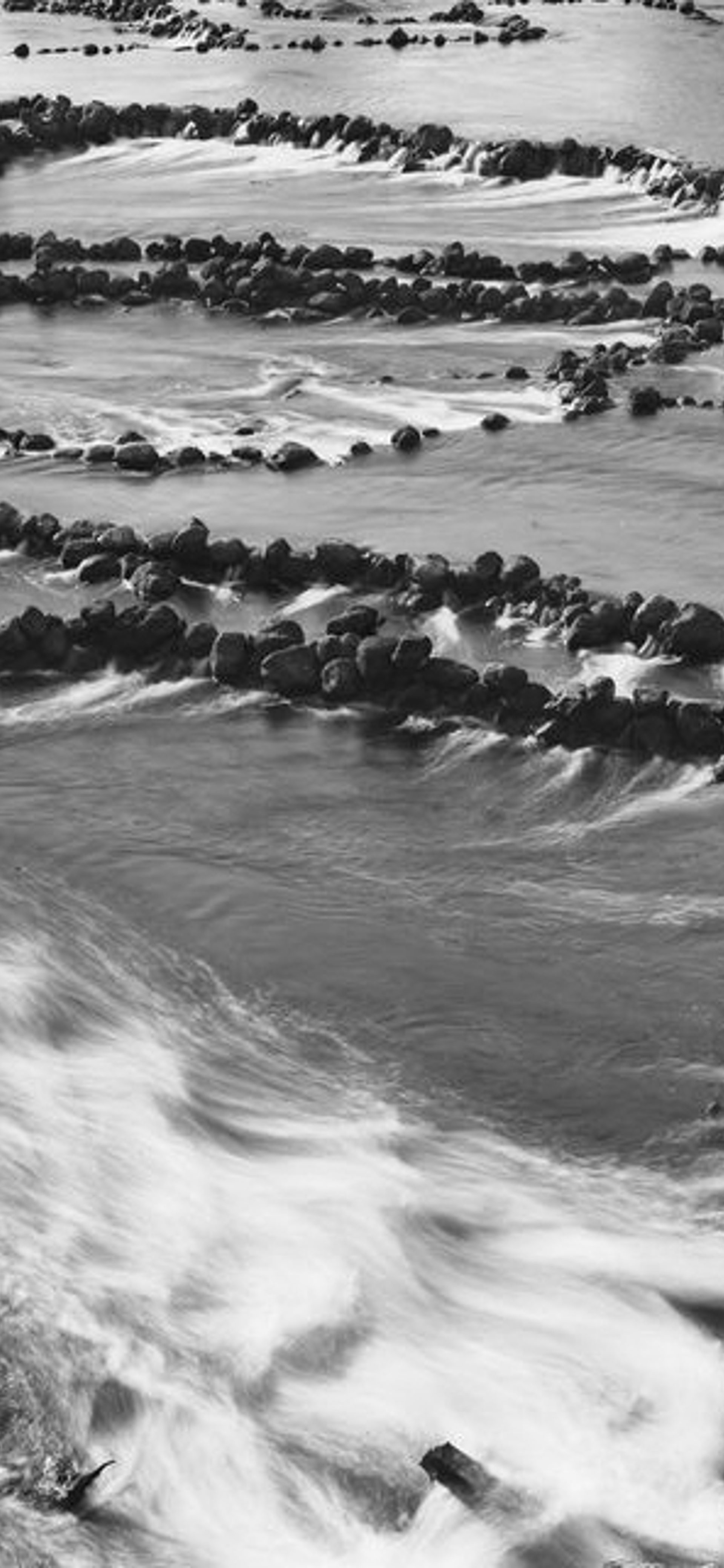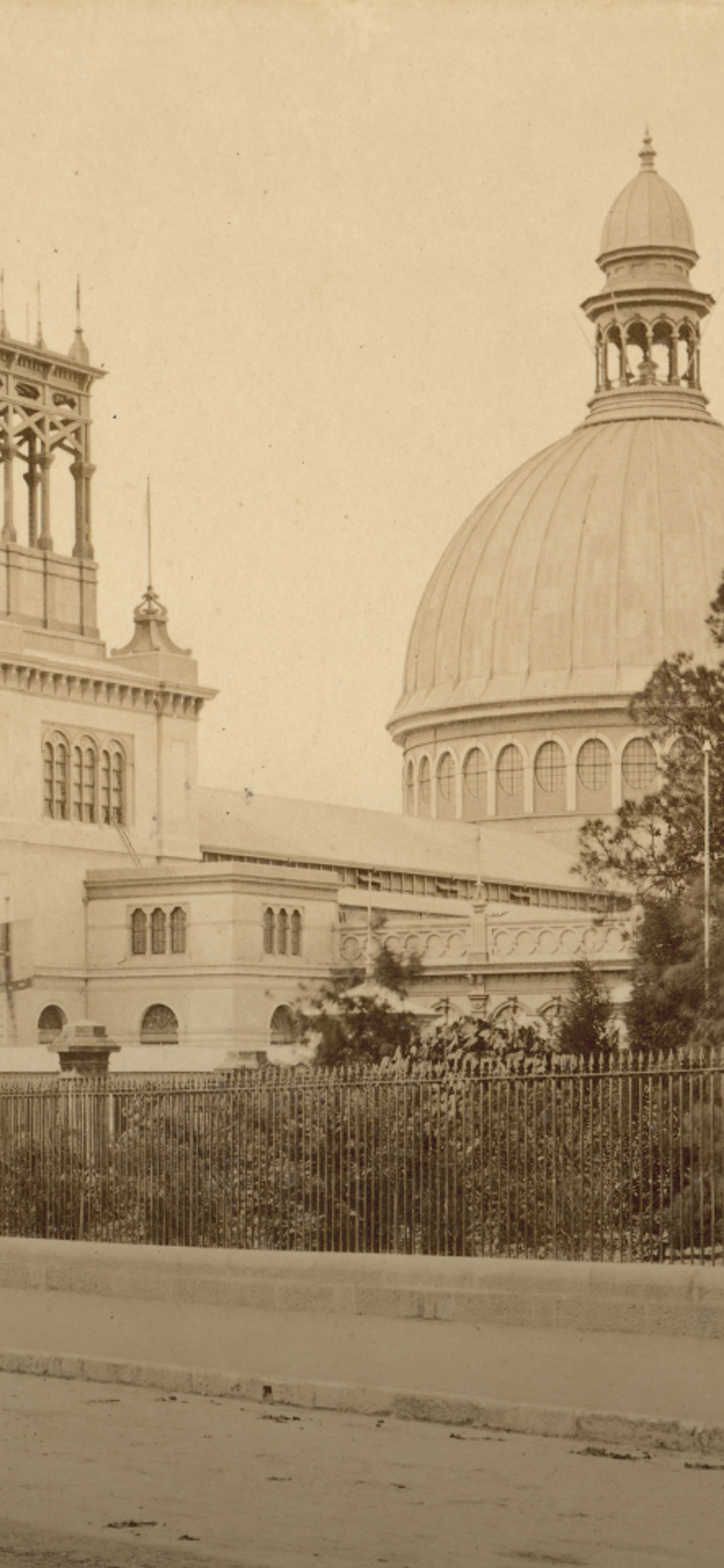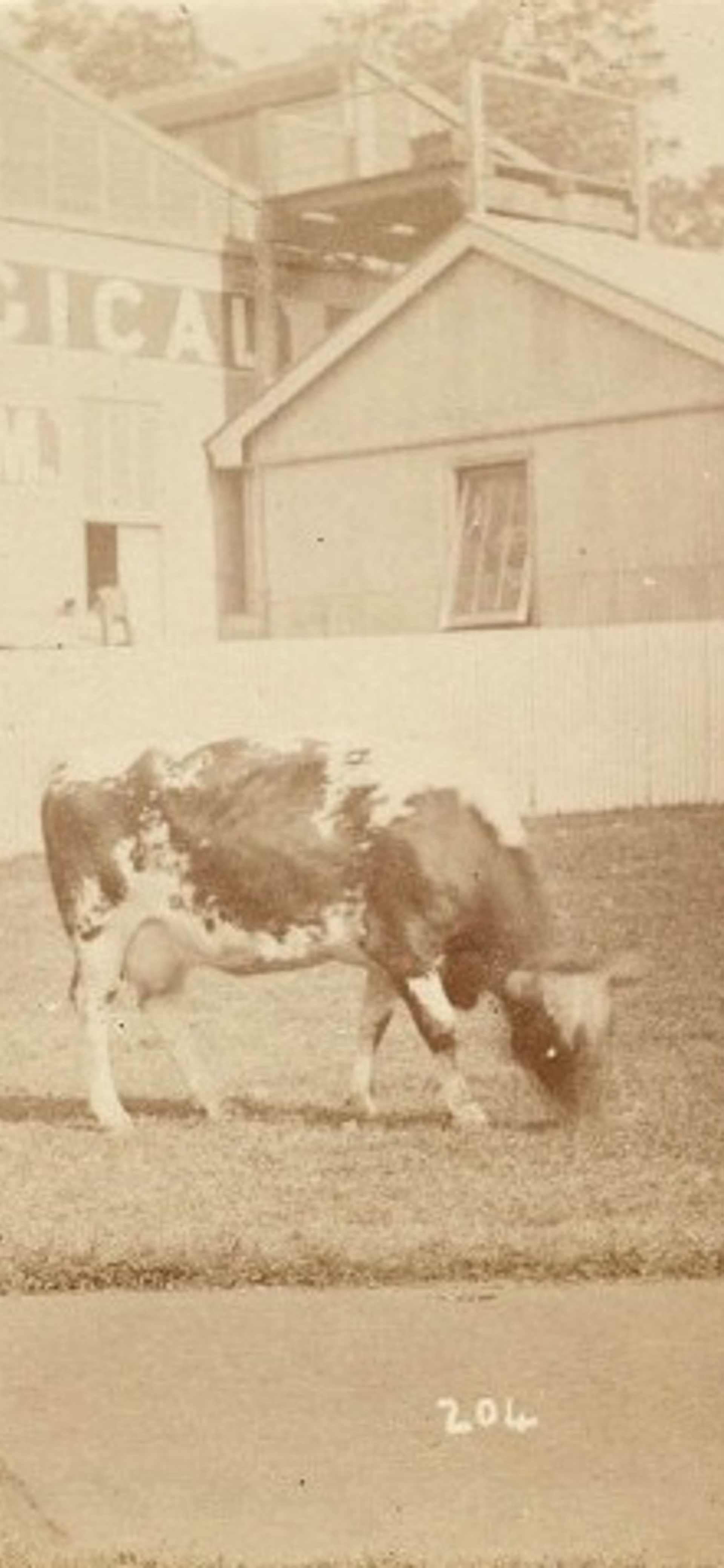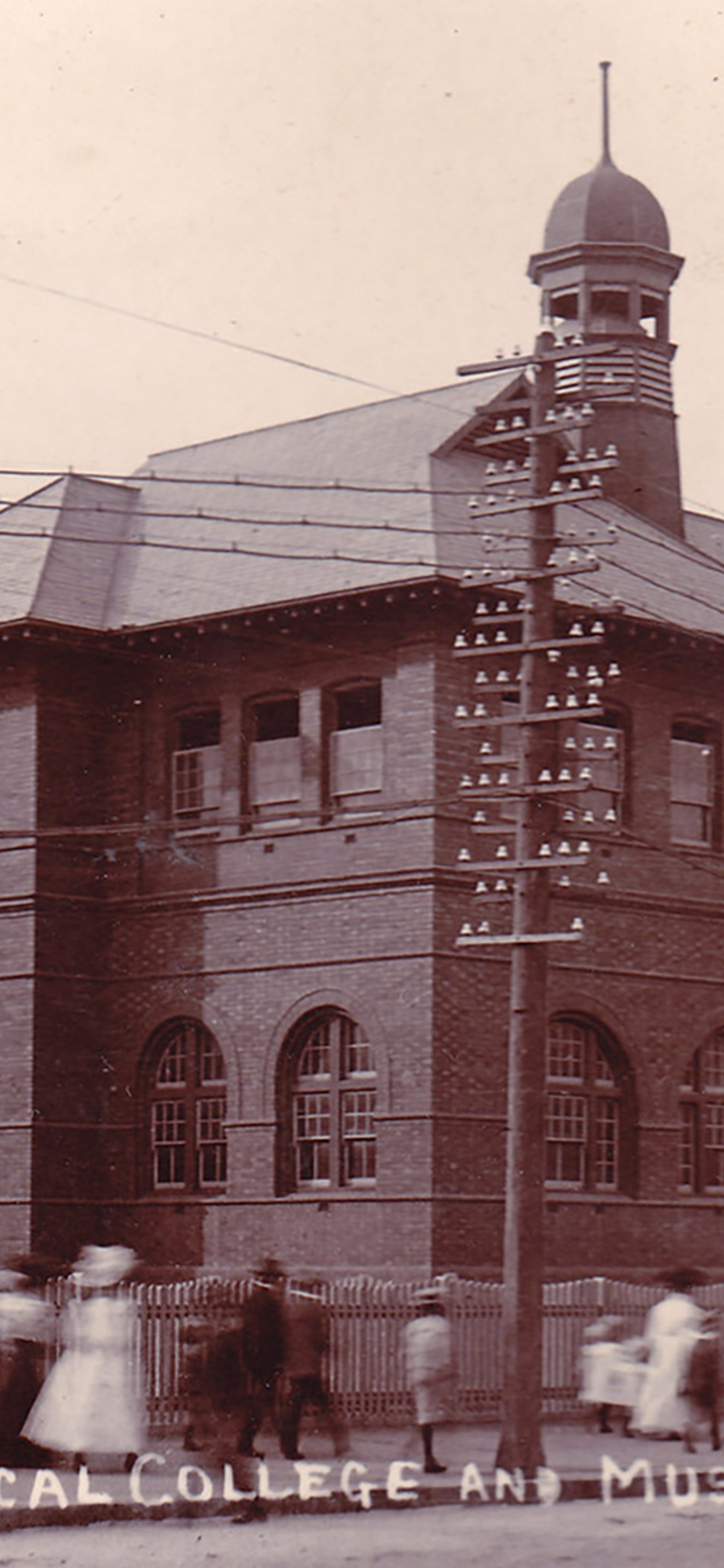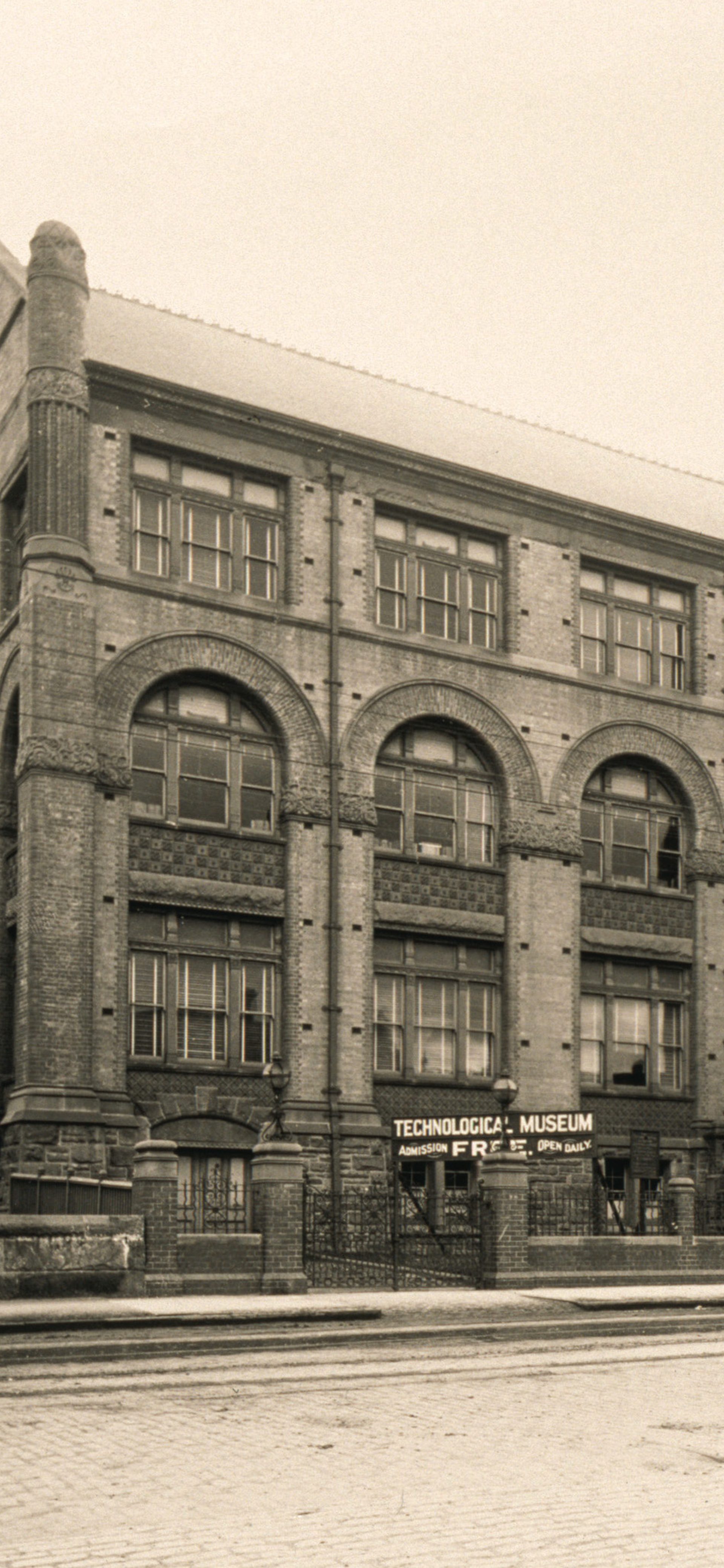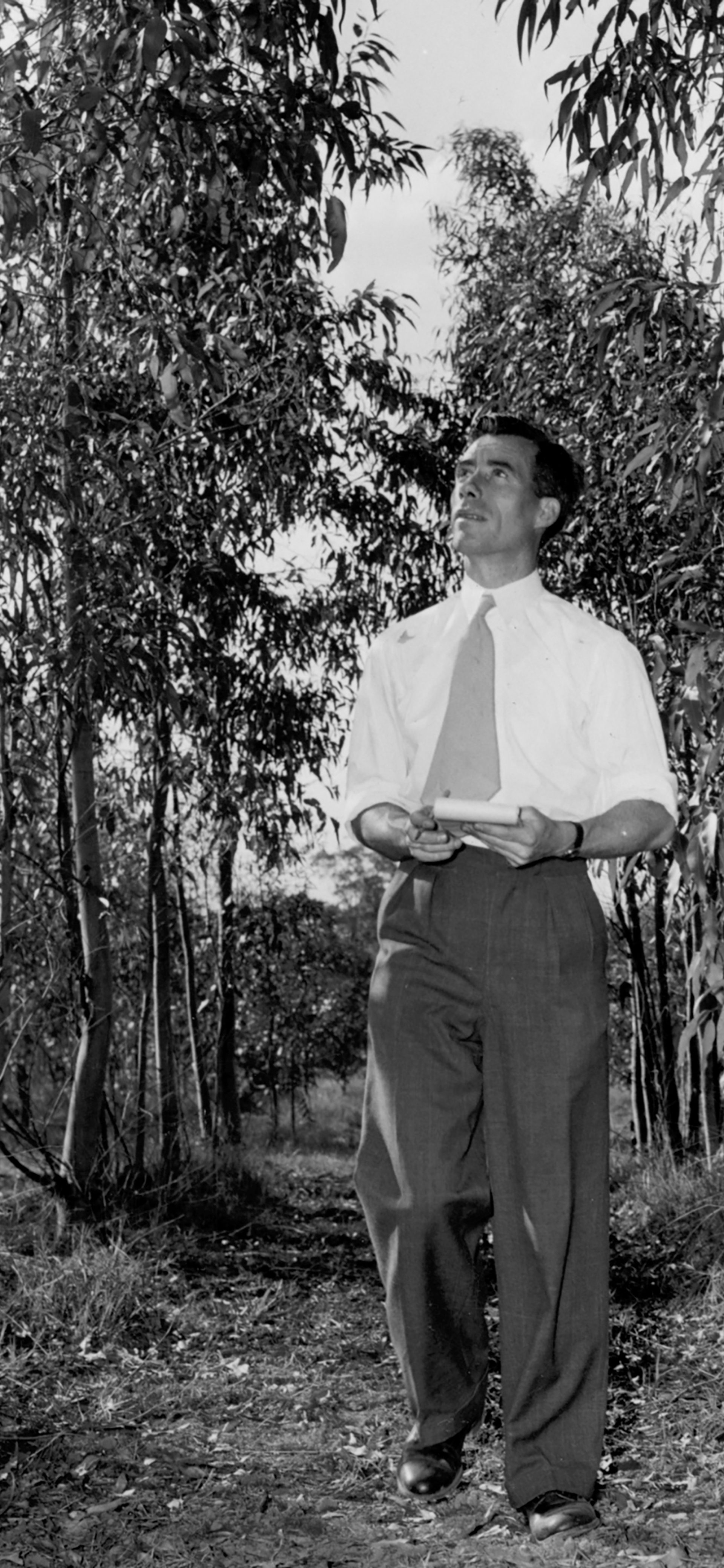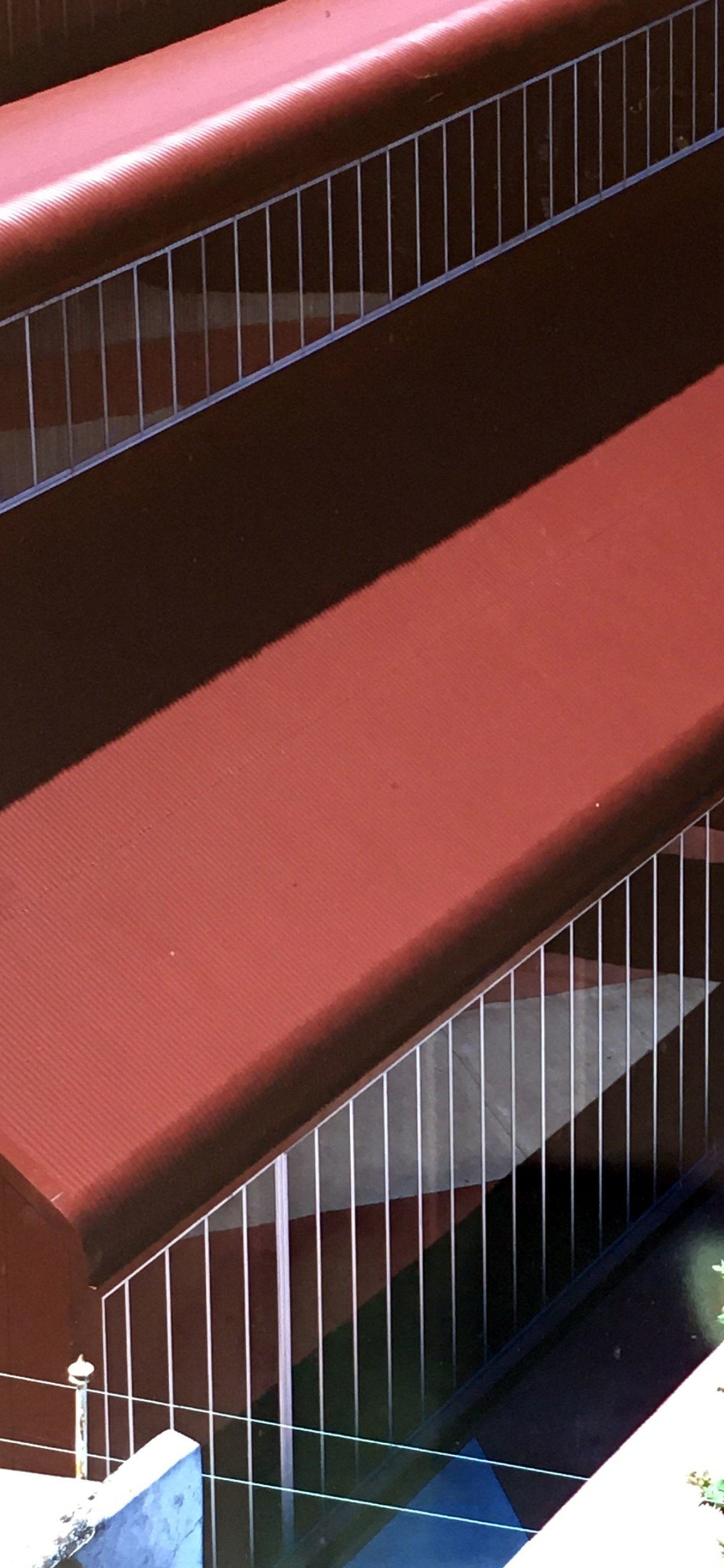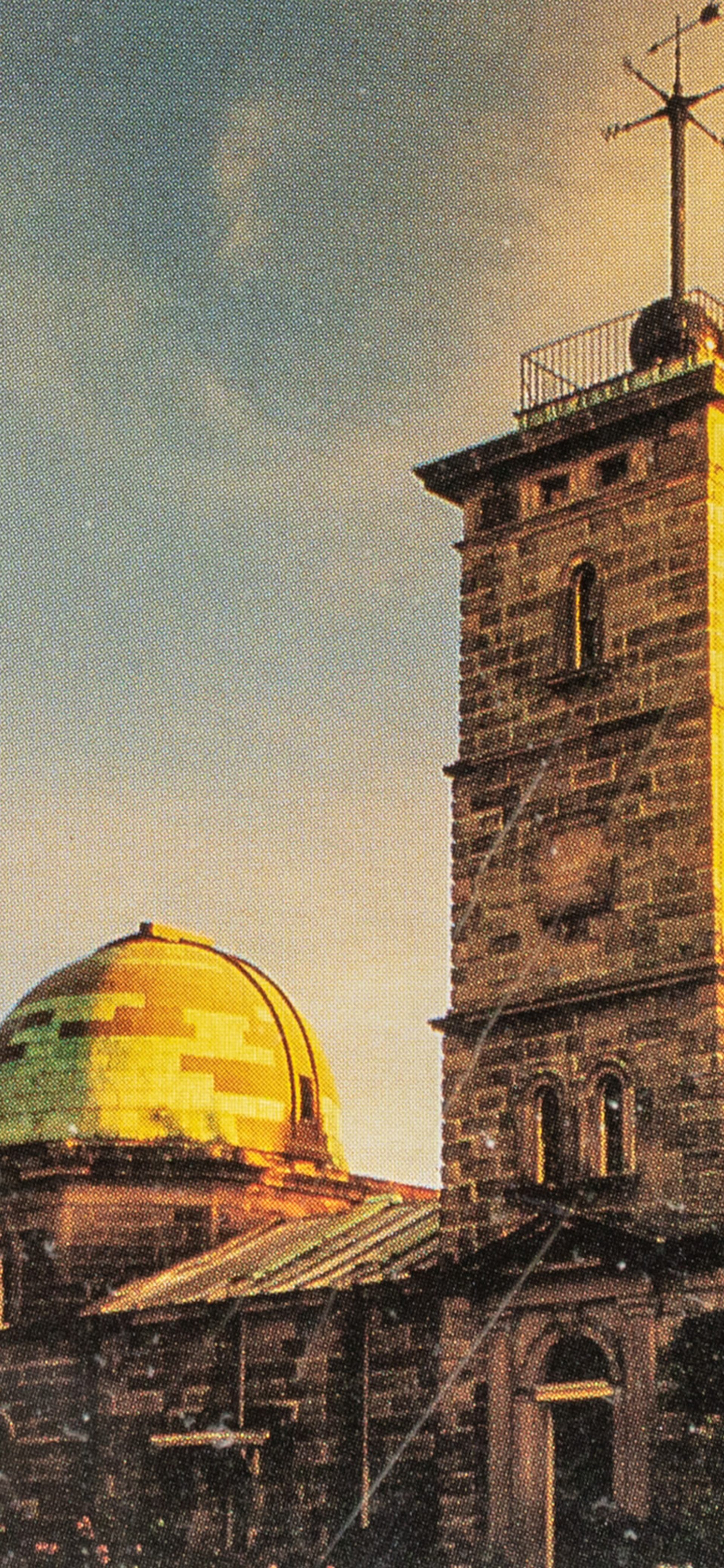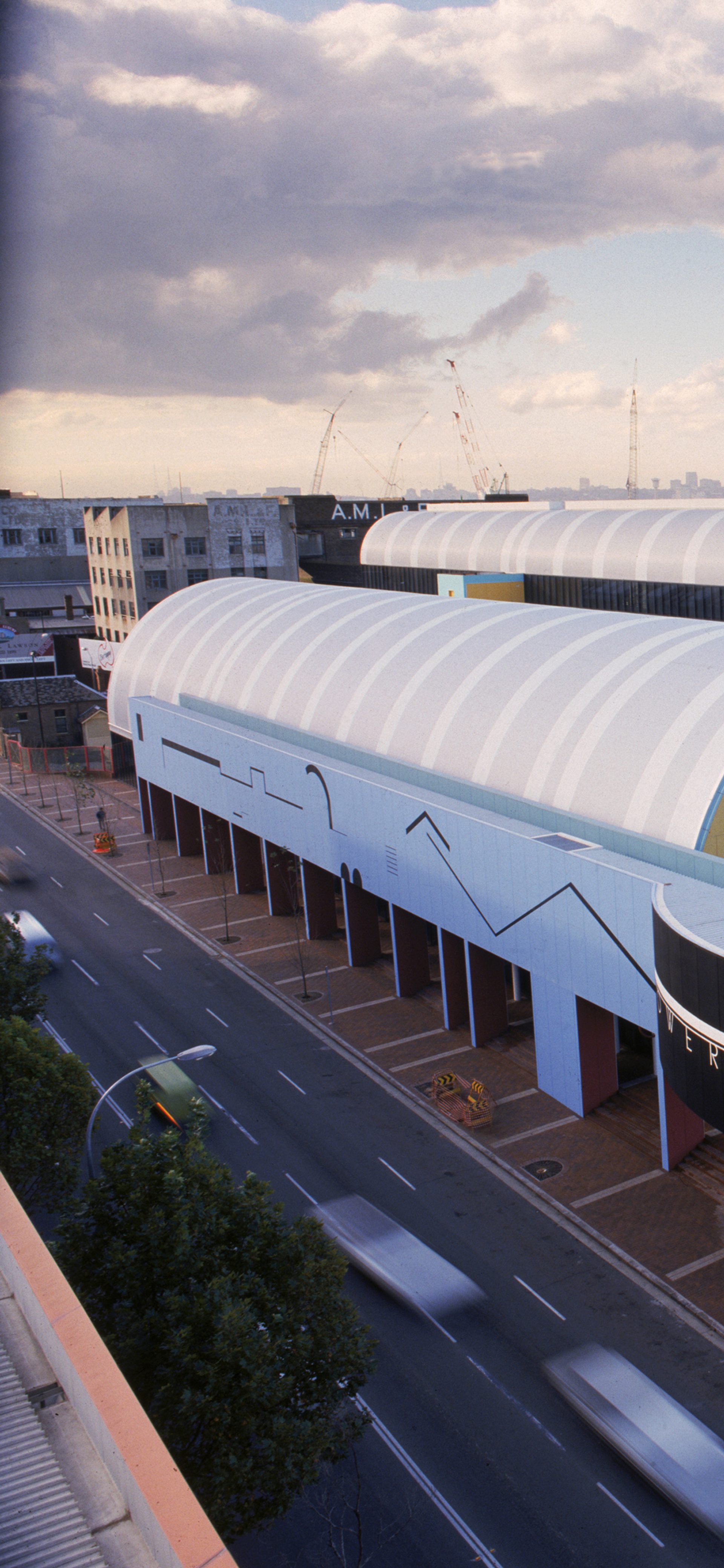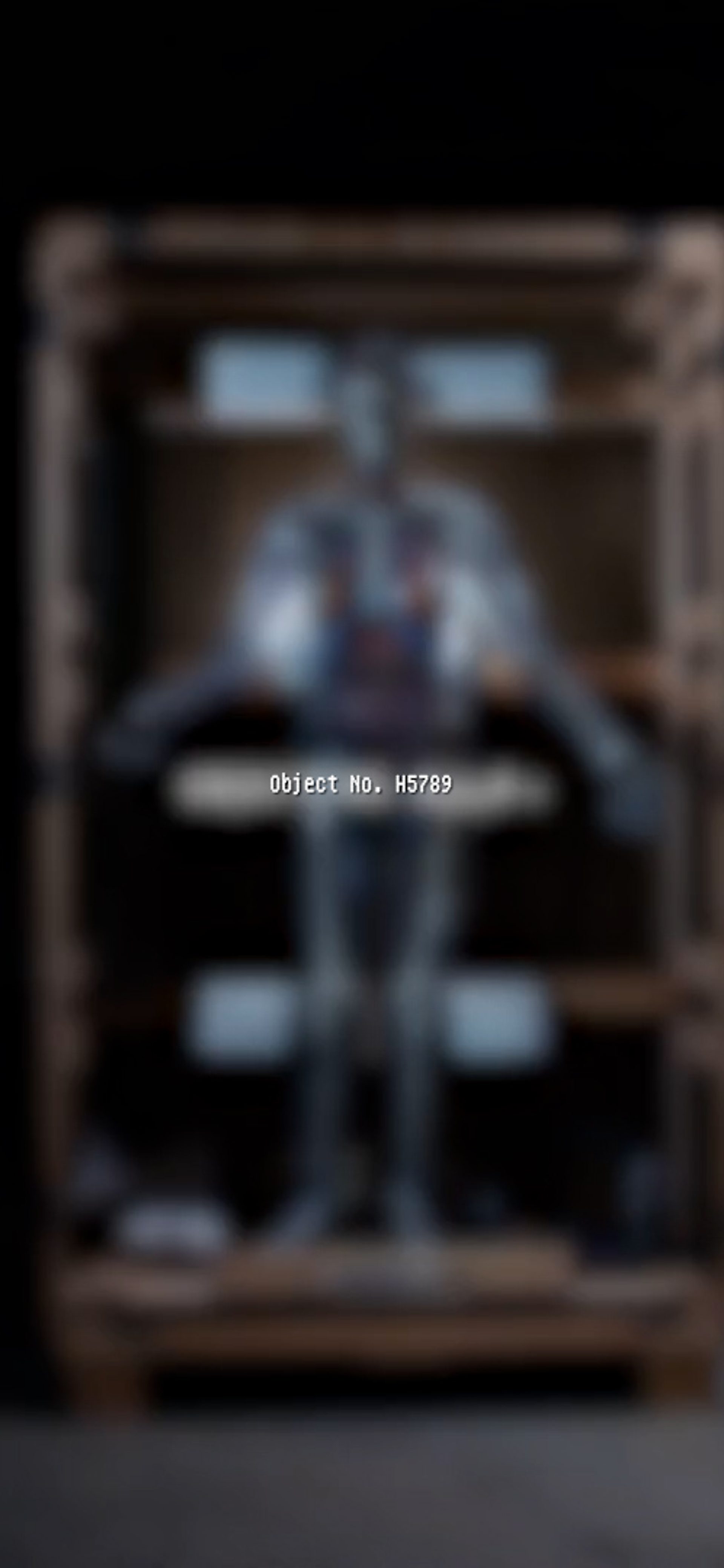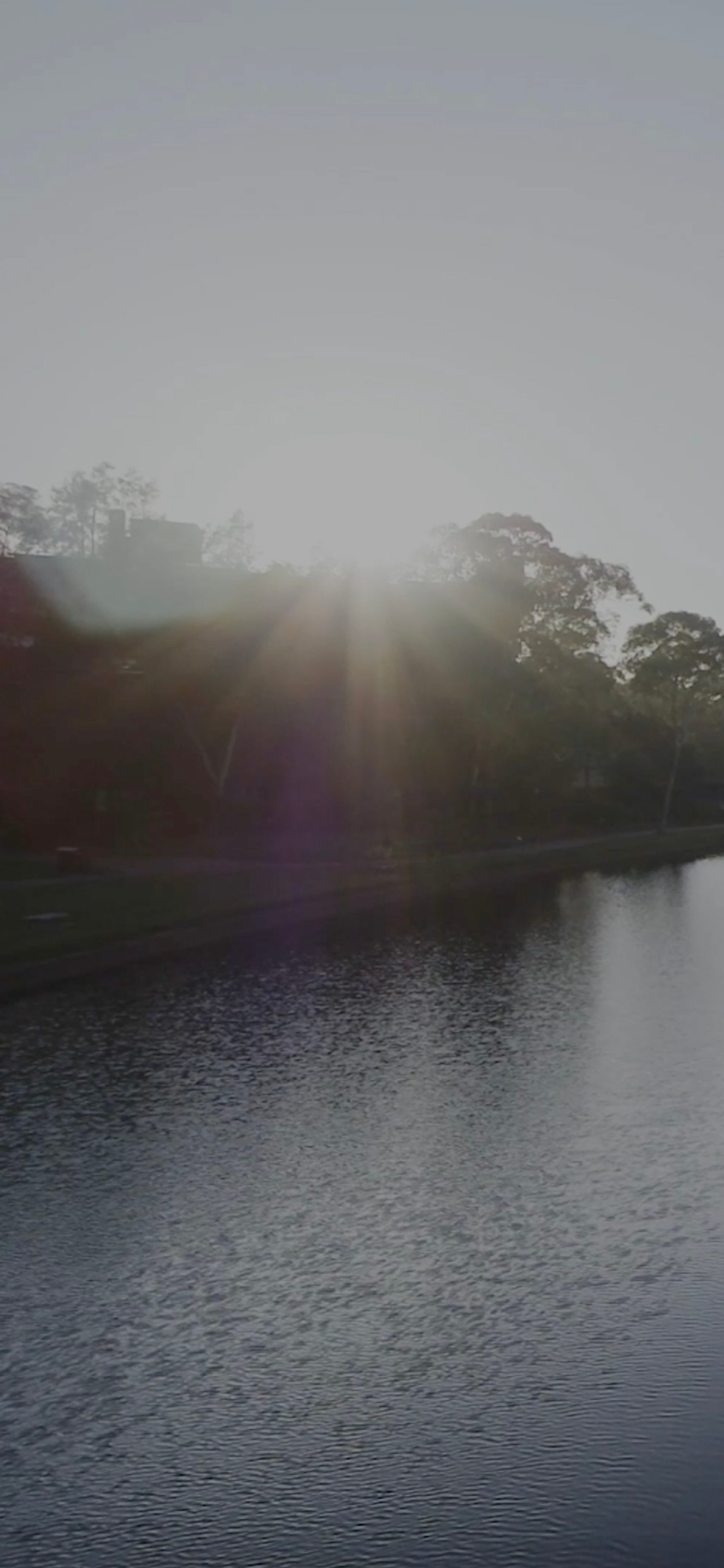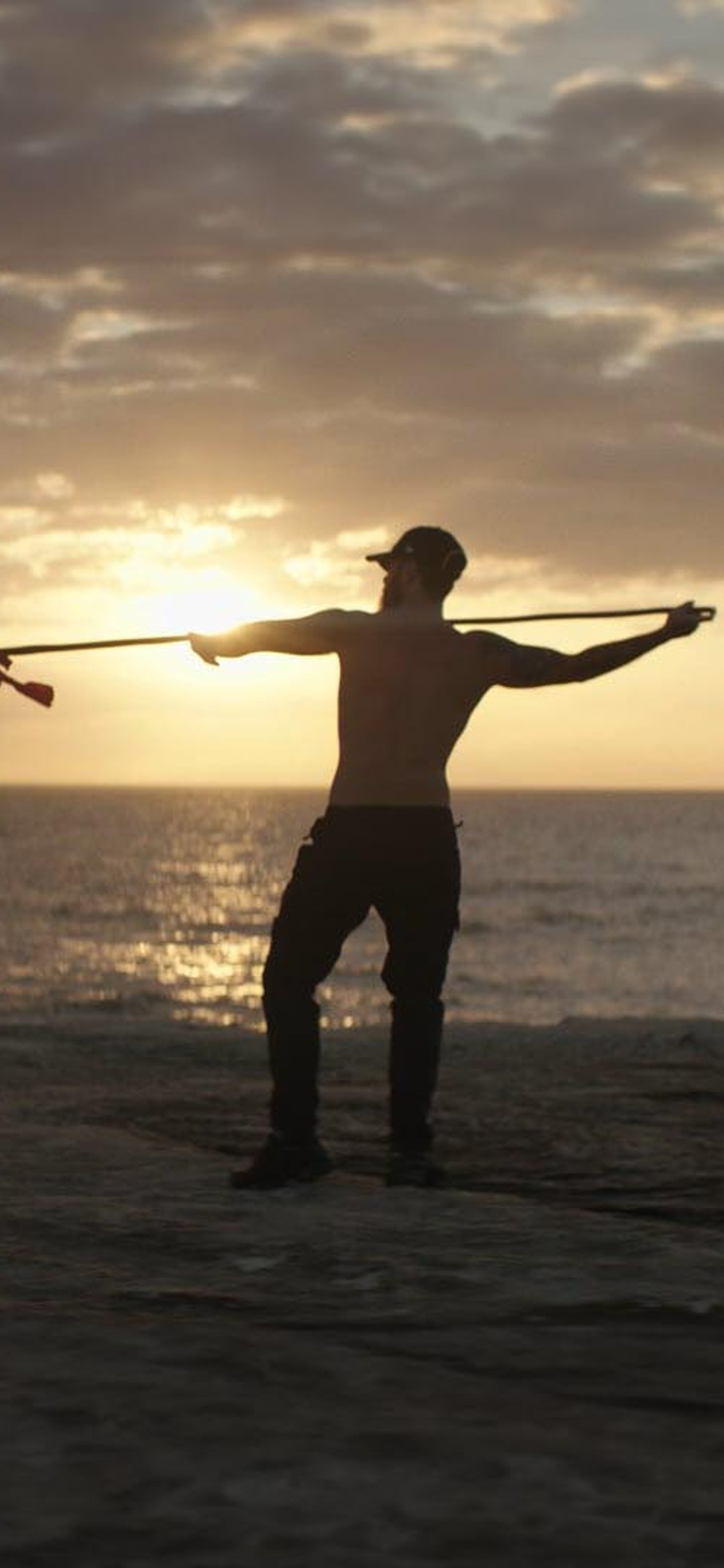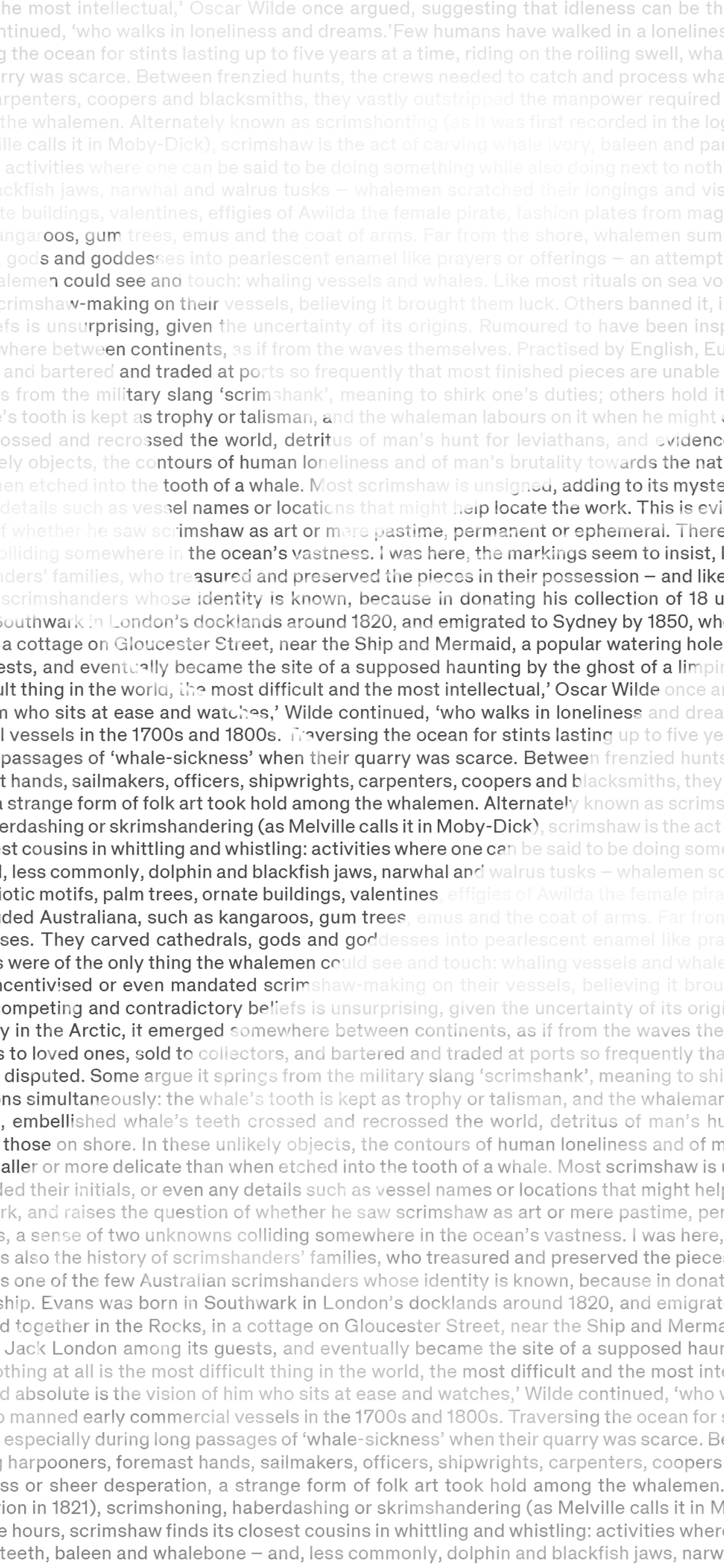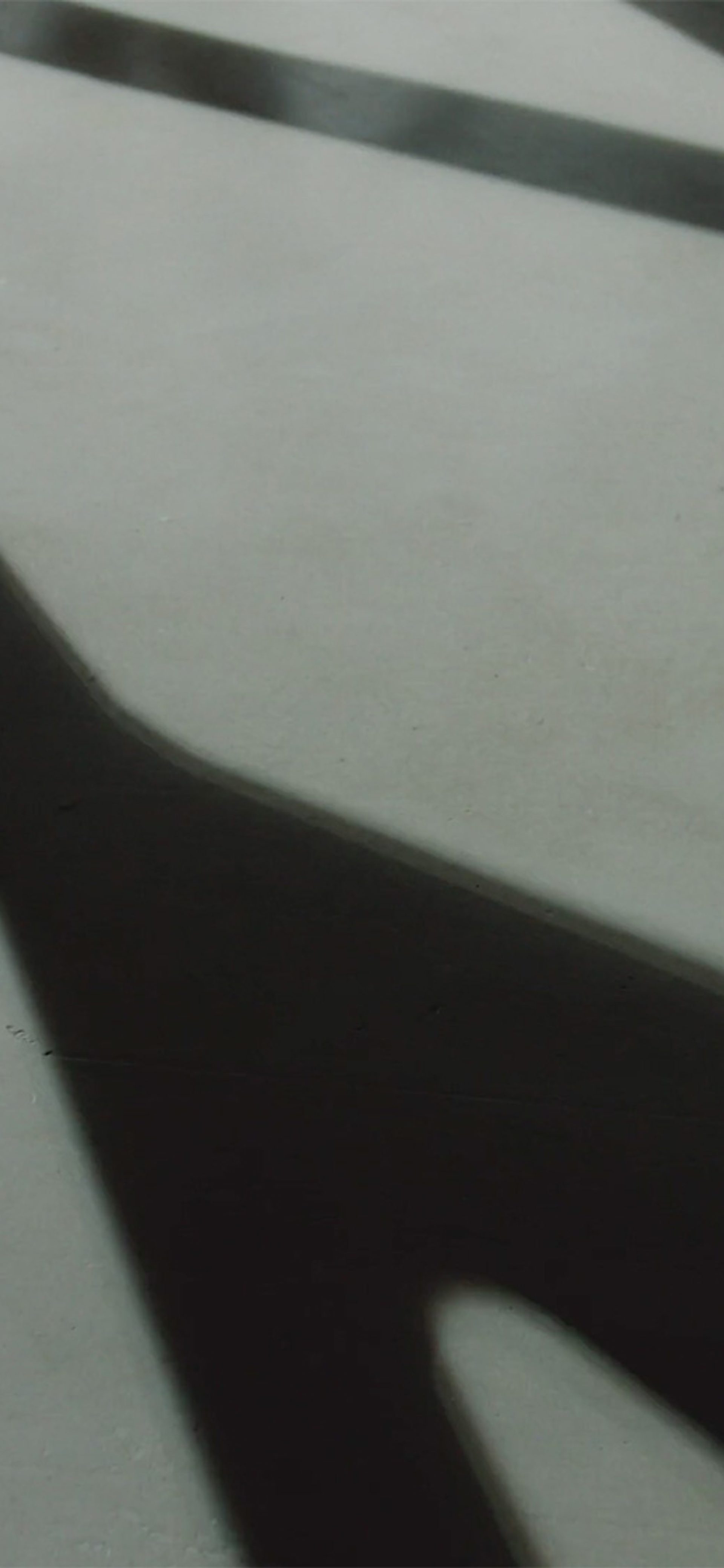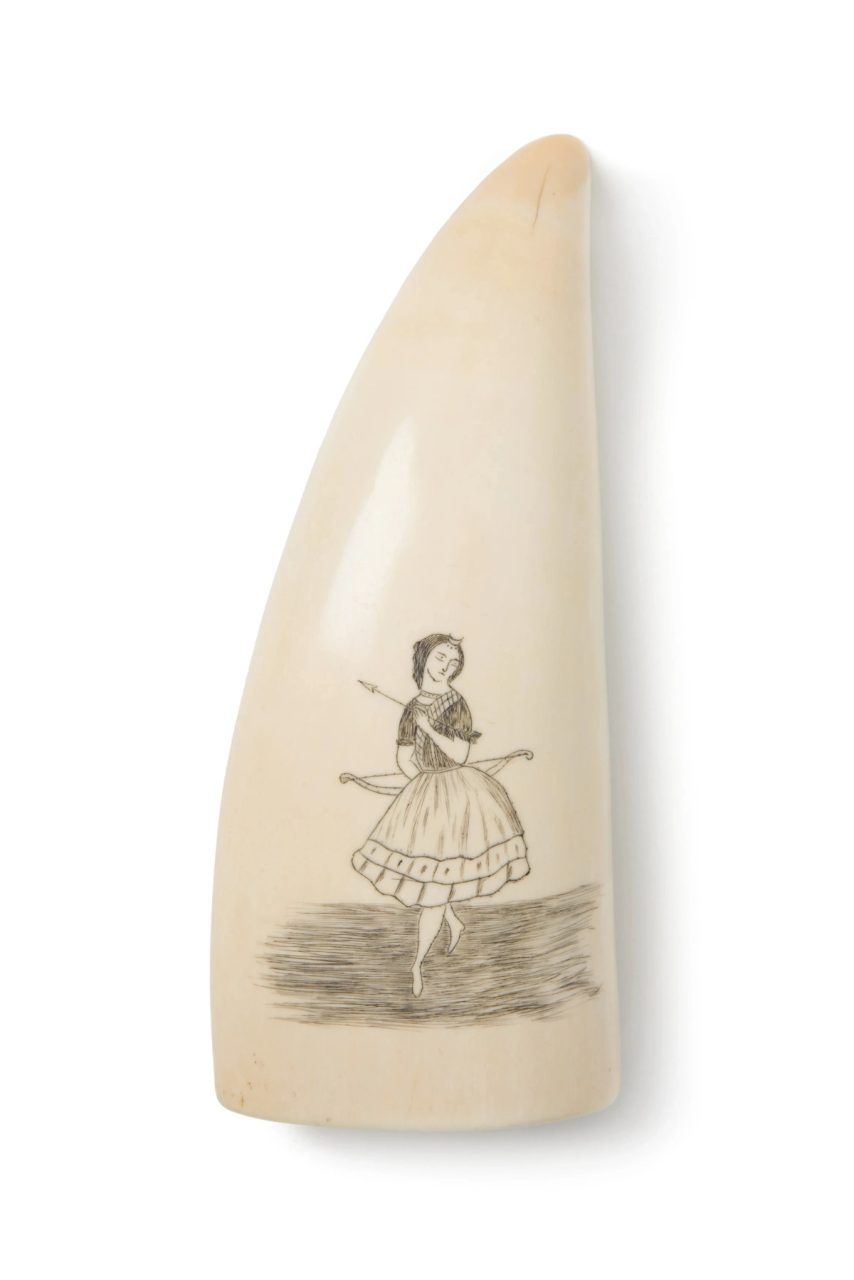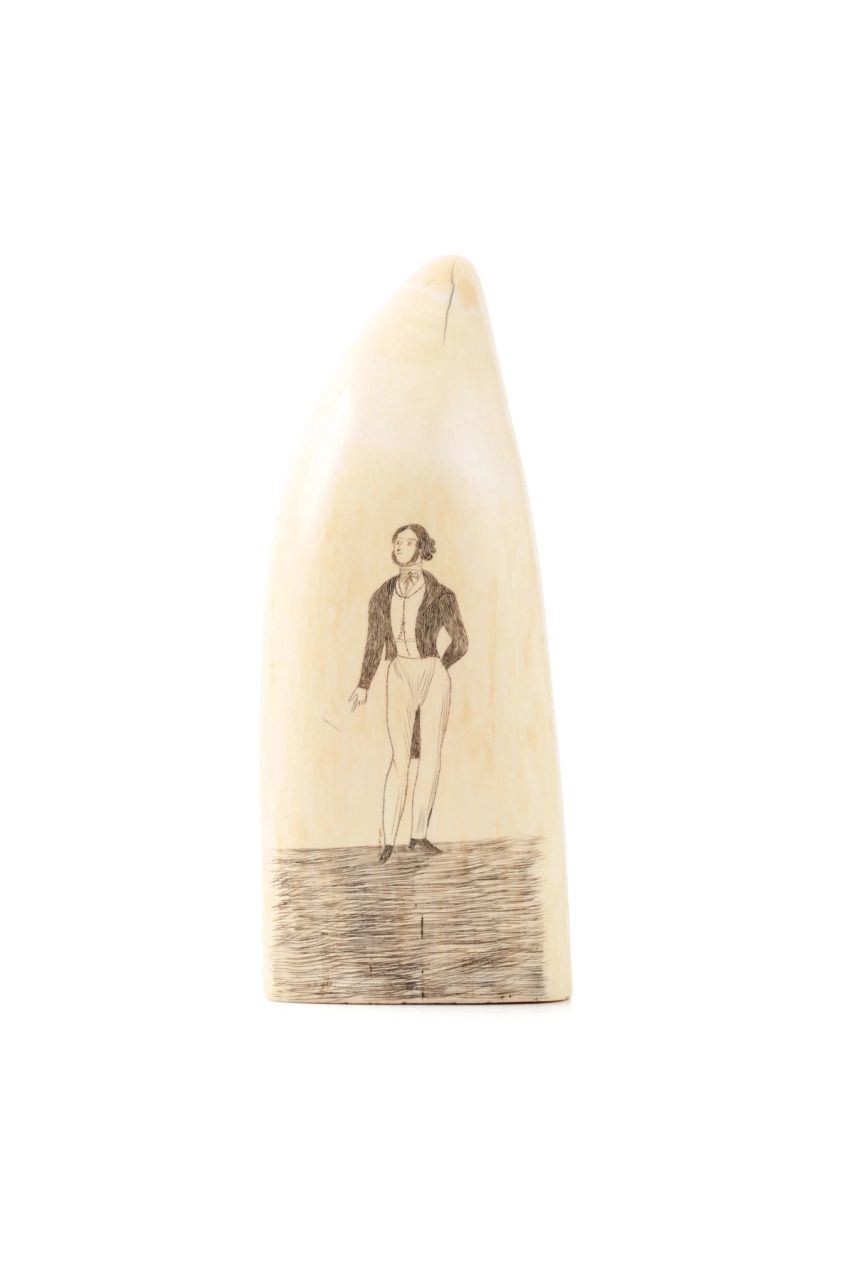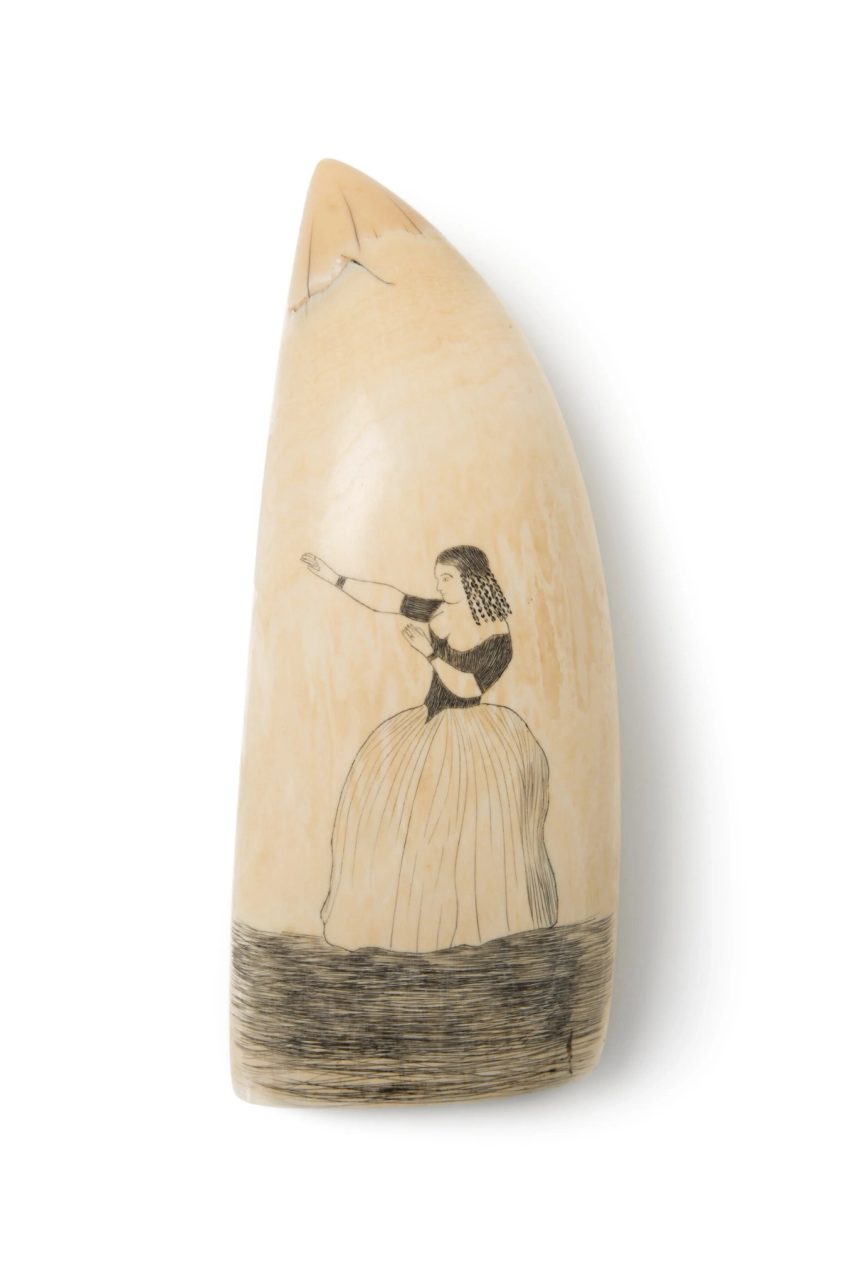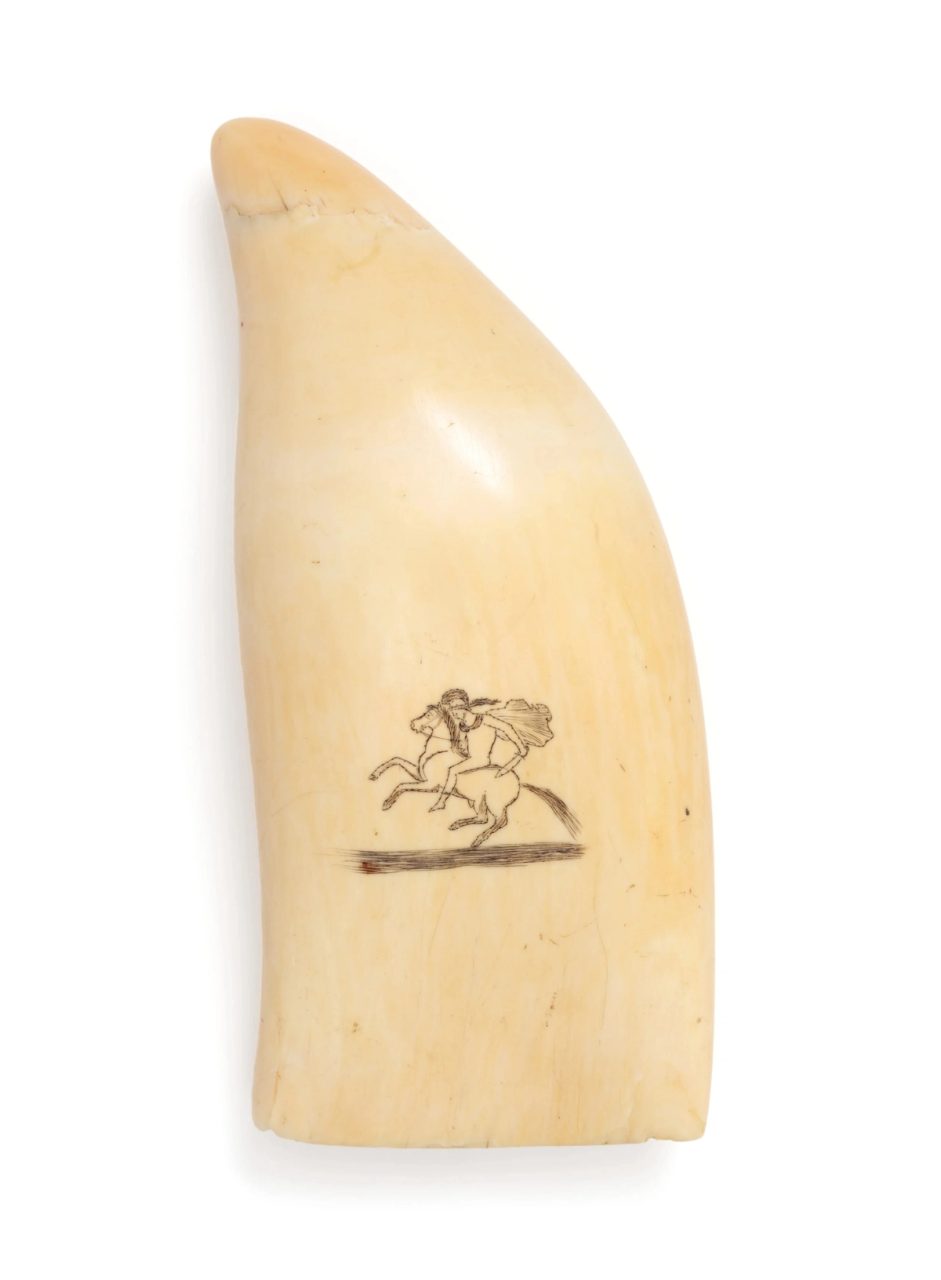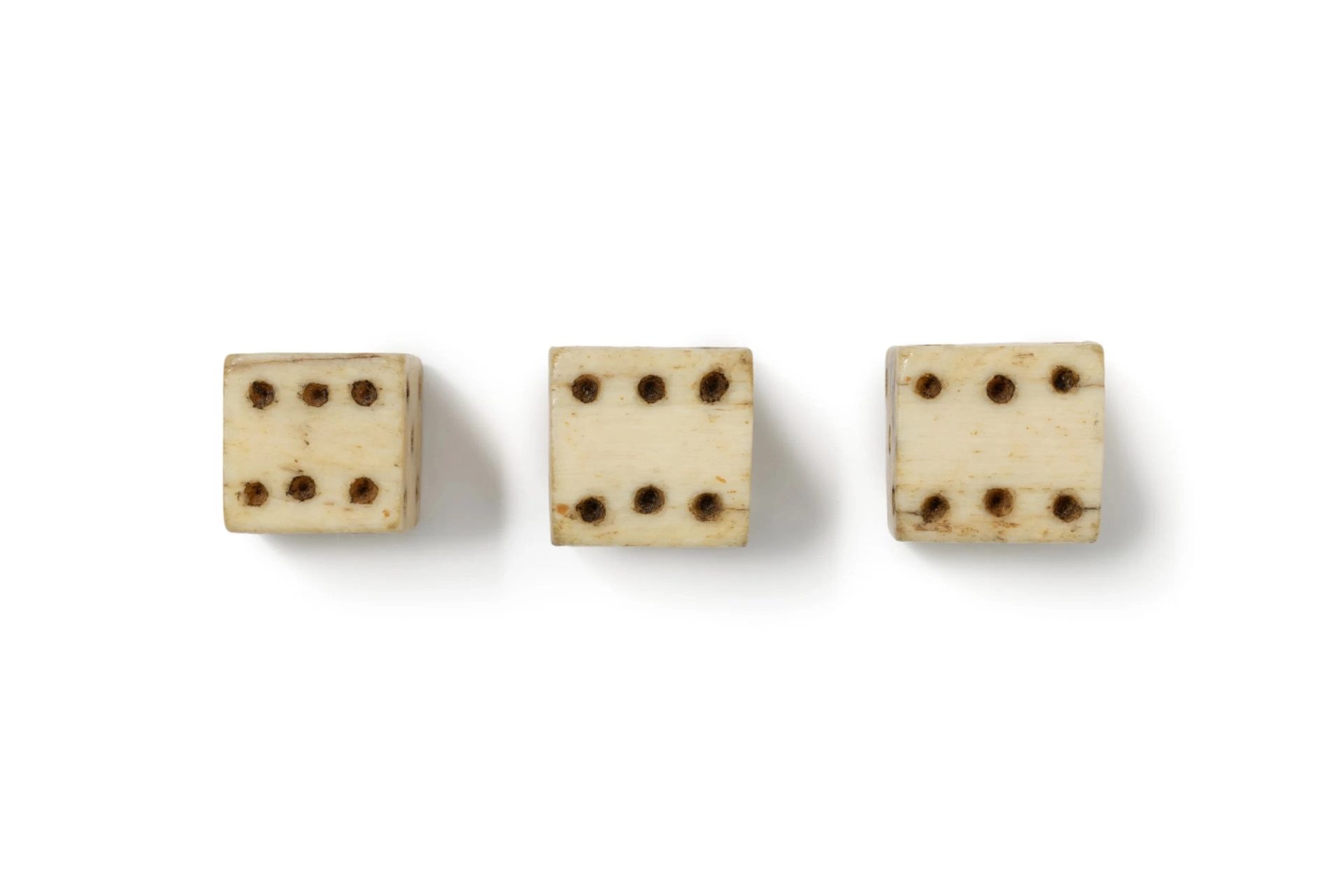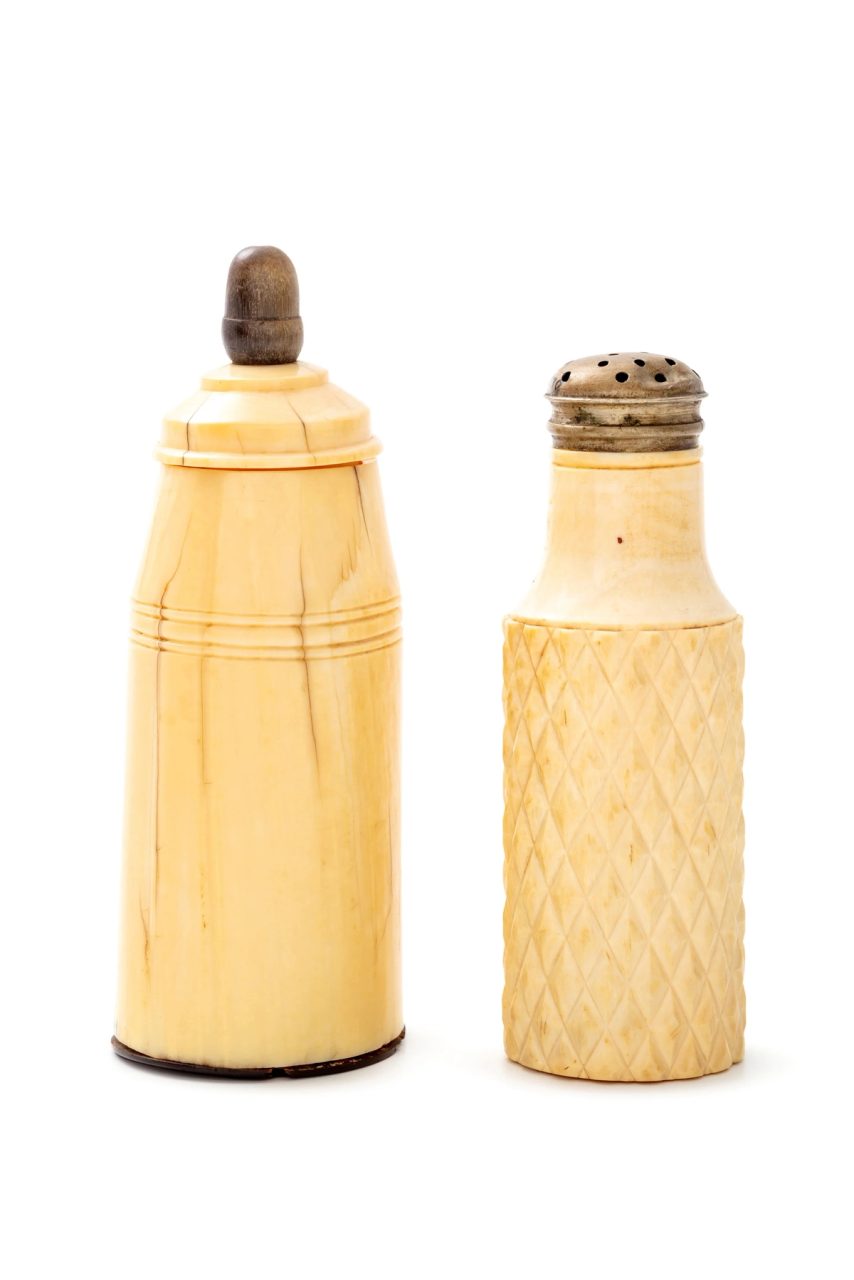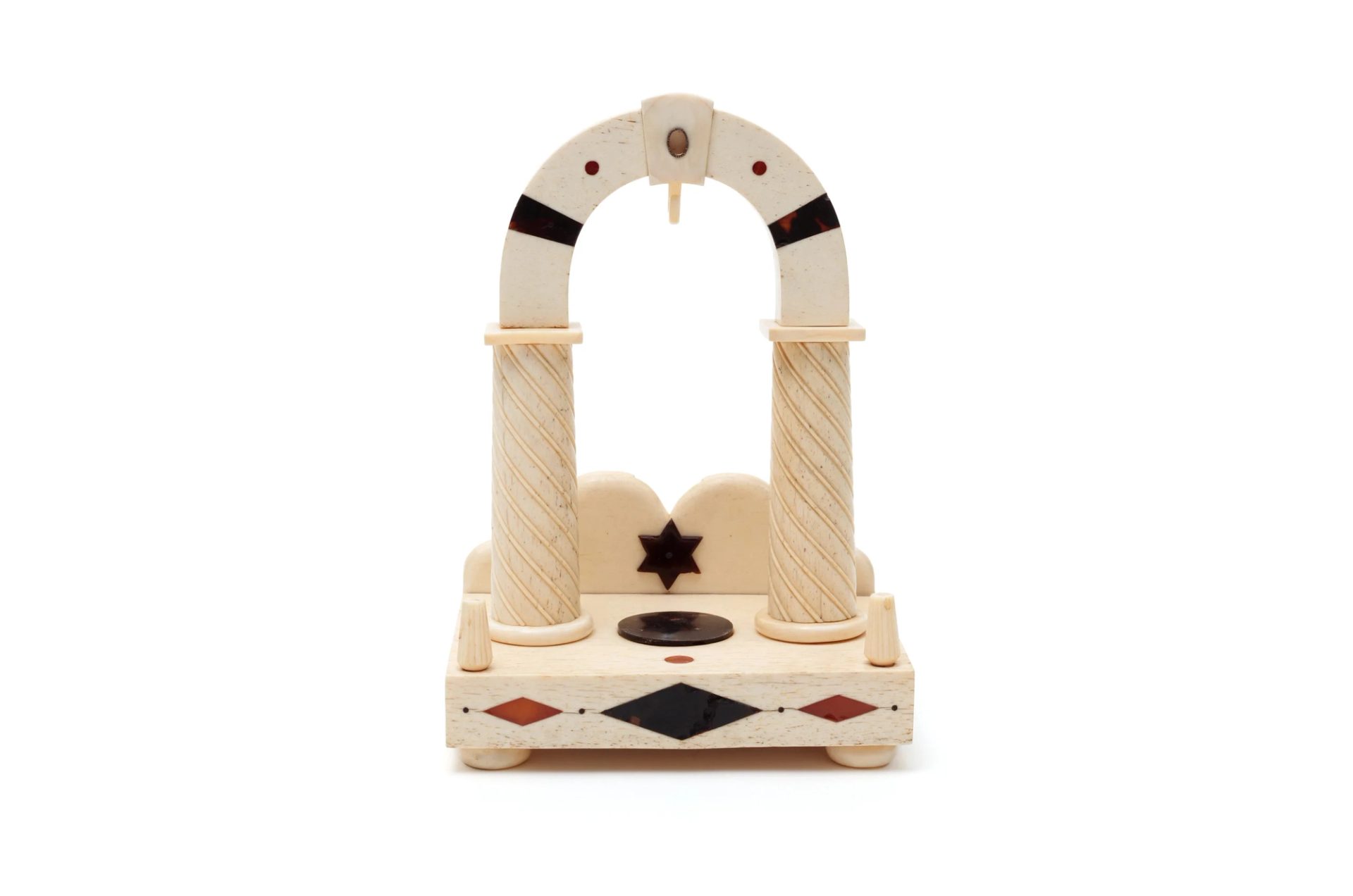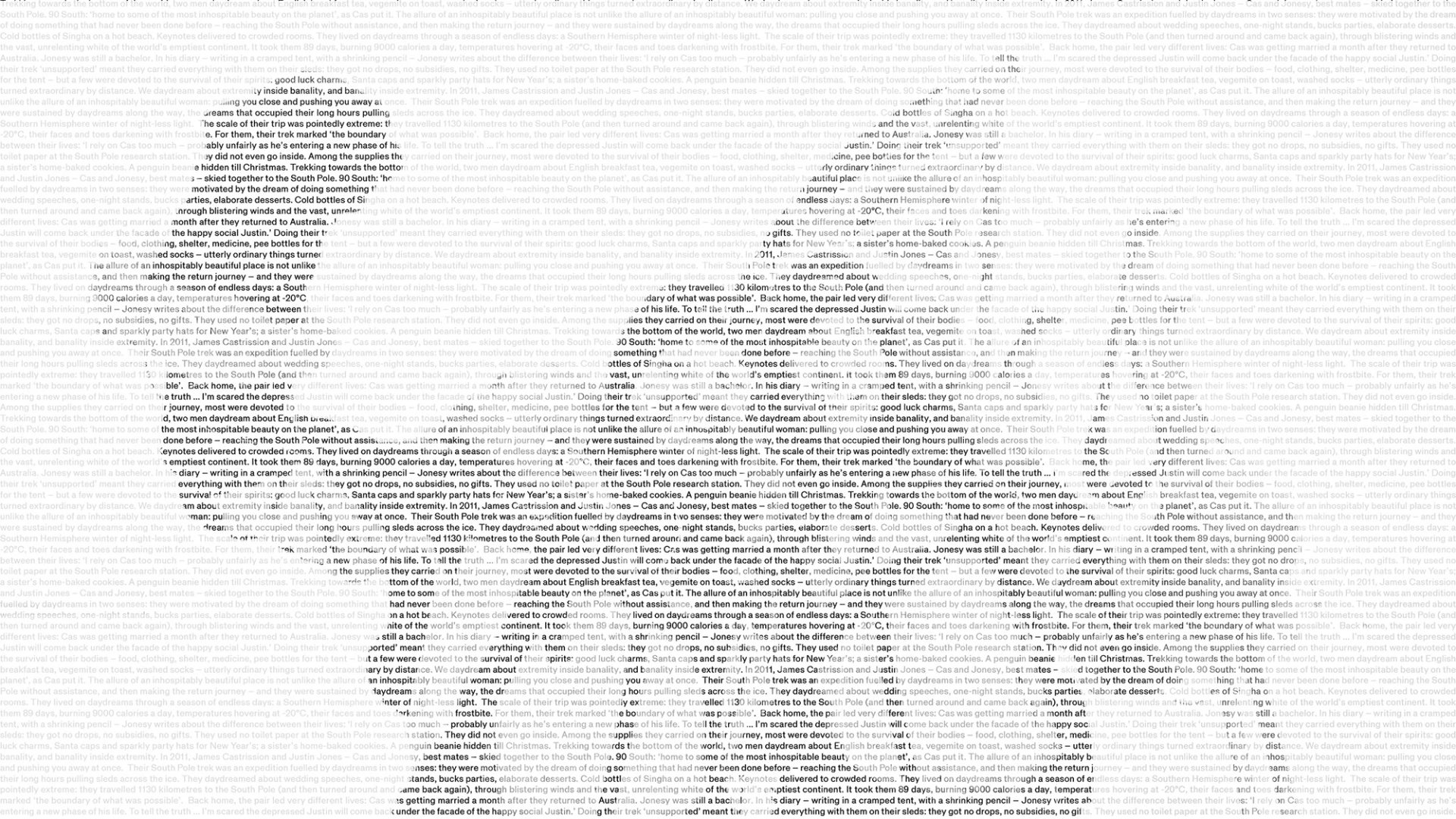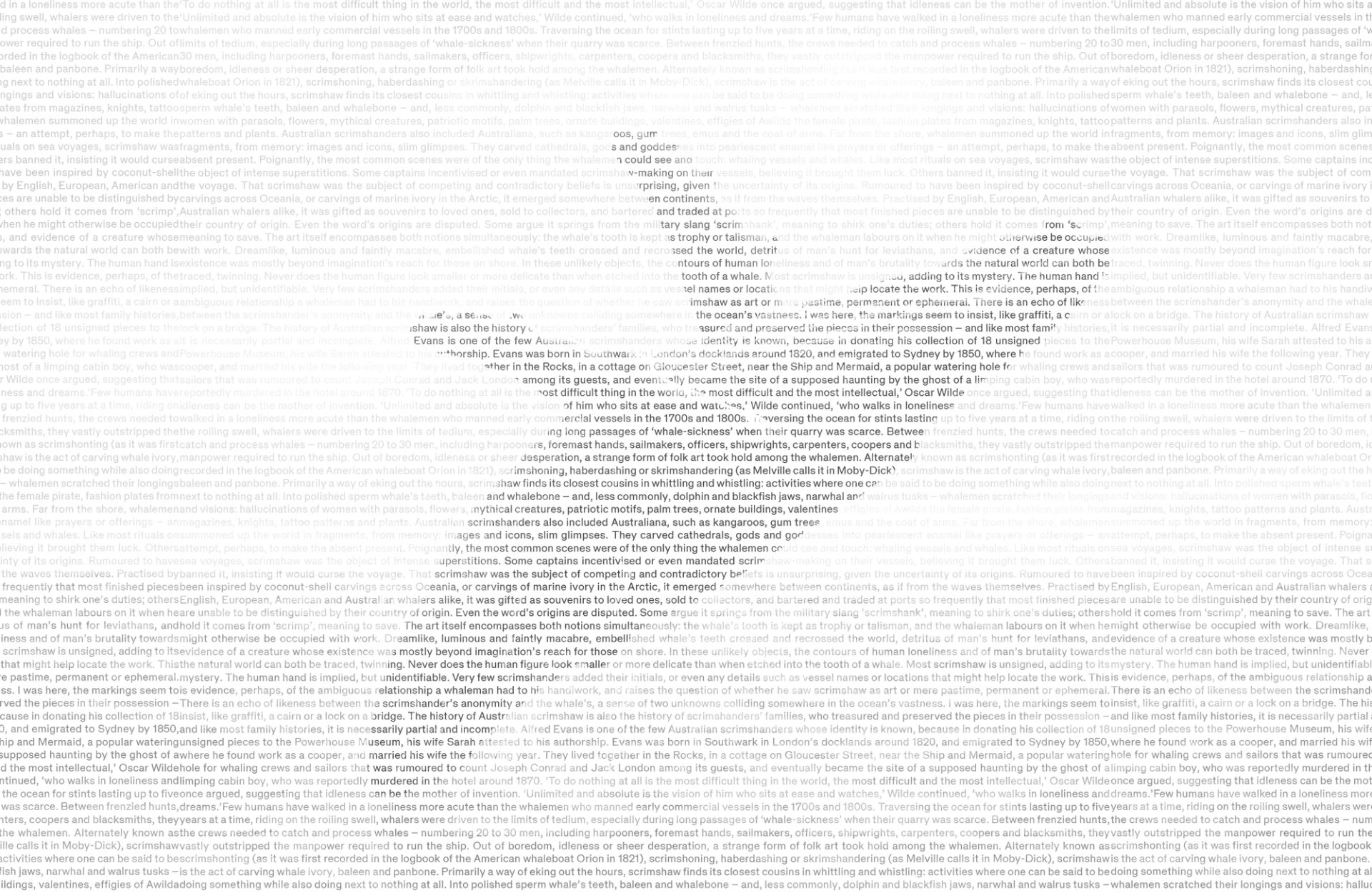Art, Idleness and Leviathans: Alfred Evans’ Scrimshaw

Sarah Holland-Batt, winner of the 2023 Stella Prize, has been commissioned by Powerhouse to write about objects in the Powerhouse Collection. In this work she places the exquisite art of scrimshaw in an epic narrative worthy of Melville’s Moby-Dick.
‘What a strange, demented feeling it gives me when I realise I have spent whole days before this inkstone, with nothing better to do.’
Art, Idleness and Leviathans: Alfred Evans’ Scrimshaw
‘To do nothing at all is the most difficult thing in the world, the most difficult and the most intellectual,’ Oscar Wilde once argued, suggesting that idleness can be the mother of invention. ‘Unlimited and absolute is the vision of him who sits at ease and watches,’ Wilde continued, ‘who walks in loneliness and dreams.’
Few humans have walked in a loneliness more acute than the whalemen who manned early commercial vessels in the 1700s and 1800s. Traversing the ocean for stints lasting up to five years at a time, riding on the roiling swell, whalers were driven to the limits of tedium, especially during long passages of ‘whale-sickness’ when their quarry was scarce.
Between frenzied hunts, the crews needed to catch and process whales – numbering 20 to 30 men, including harpooners, foremast hands, sailmakers, officers, shipwrights, carpenters, coopers and blacksmiths – they vastly outstripped the manpower required to run the ship. Out of boredom, idleness or sheer desperation, a strange form of folk art took hold among the whalemen.
Alternately known as scrimshonting (as it was first recorded in the logbook of the American whaleboat Orion in 1821), scrimshoning, haberdashing or skrimshandering (as Melville calls it in Moby-Dick), scrimshaw is the act of carving whale ivory, baleen and panbone. Primarily a way of eking out the hours, scrimshaw finds its closest cousins in whittling and whistling: activities where one can be said to be doing something while also doing next to nothing at all.
Into polished sperm whale’s teeth, baleen and whalebone – and, less commonly, dolphin and blackfish jaws, narwhal and walrus tusks – whalemen scratched their longings and visions: hallucinations of women with parasols, flowers, mythical creatures, patriotic motifs, palm trees, ornate buildings, valentines, effigies of Awilda the female pirate, fashion plates from magazines, knights, tattoo patterns and plants. Australian scrimshanders also included Australiana, such as kangaroos, gum trees, emus and the coat of arms. Far from the shore, whalemen summoned up the world in fragments, from memory: images and icons, slim glimpses. They carved cathedrals, gods and goddesses into pearlescent enamel like prayers or offerings – an attempt, perhaps, to make the absent present. Poignantly, the most common scenes were of the only thing the whalemen could see and touch: whaling vessels and whales.
Like most rituals on sea voyages, scrimshaw was the object of intense superstitions. Some captains incentivised or even mandated scrimshaw-making on their vessels, believing it brought them luck. Others banned it, insisting it would curse the voyage. That scrimshaw was the subject of competing and contradictory beliefs is unsurprising, given the uncertainty of its origins. Rumoured to have been inspired by coconut-shell carvings across Oceania, or carvings of marine ivory in the Arctic, it emerged somewhere between continents, as if from the waves themselves. Practised by English, European, American and Australian whalers alike, it was gifted as souvenirs to loved ones, sold to collectors, and bartered and traded at ports so frequently that most finished pieces are unable to be distinguished by their country of origin.
Even the word’s origins are disputed. Some argue it springs from the military slang ‘scrimshank’, meaning to shirk one’s duties; others hold it comes from ‘scrimp’, meaning to save. The art itself encompasses both notions simultaneously: the whale’s tooth is kept as trophy or talisman, and the whaleman labours on it when he might otherwise be occupied with work.
Dreamlike, luminous and faintly macabre, embellished whale’s teeth crossed and recrossed the world, detritus of man’s hunt for leviathans, and evidence of a creature whose existence was mostly beyond imagination’s reach for those on shore. In these unlikely objects, the contours of human loneliness and of man’s brutality towards the natural world can both be traced, twinning.
Never does the human figure look smaller or more delicate than when etched into the tooth of a whale.
*
Most scrimshaw is unsigned, adding to its mystery. The human hand is implied, but unidentifiable. Very few scrimshanders added their initials, or even any details such as vessel names or locations that might help locate the work. This is evidence, perhaps, of the ambiguous relationship a whaleman had to his handiwork, and raises the question of whether he saw scrimshaw as art or mere pastime, permanent or ephemeral. There is an echo of likeness between the scrimshander’s anonymity and the whale’s, a sense of two unknowns colliding somewhere in the ocean’s vastness.
I was here, the markings seem to insist, like graffiti, a cairn or a lock on a bridge.
*
The history of Australian scrimshaw is also the history of scrimshanders’ families, who treasured and preserved the pieces in their possession – and like most family histories, it is necessarily partial and incomplete. Alfred Evans is one of the few Australian scrimshanders whose identity is known, because in donating his collection of 18 unsigned pieces to the Powerhouse Museum, his wife Sarah attested to his authorship.
Evans was born in Southwark in London’s docklands around 1820, and emigrated to Sydney by 1850, where he found work as a cooper, and married his wife the following year. They lived together in the Rocks, in a cottage on Gloucester Street, near the Ship and Mermaid, a popular watering hole for whaling crews and sailors that was rumoured to count Joseph Conrad and Jack London among its guests, and eventually became the site of a supposed haunting by the ghost of a limping cabin boy, who was reportedly murdered in the hotel around 1870.
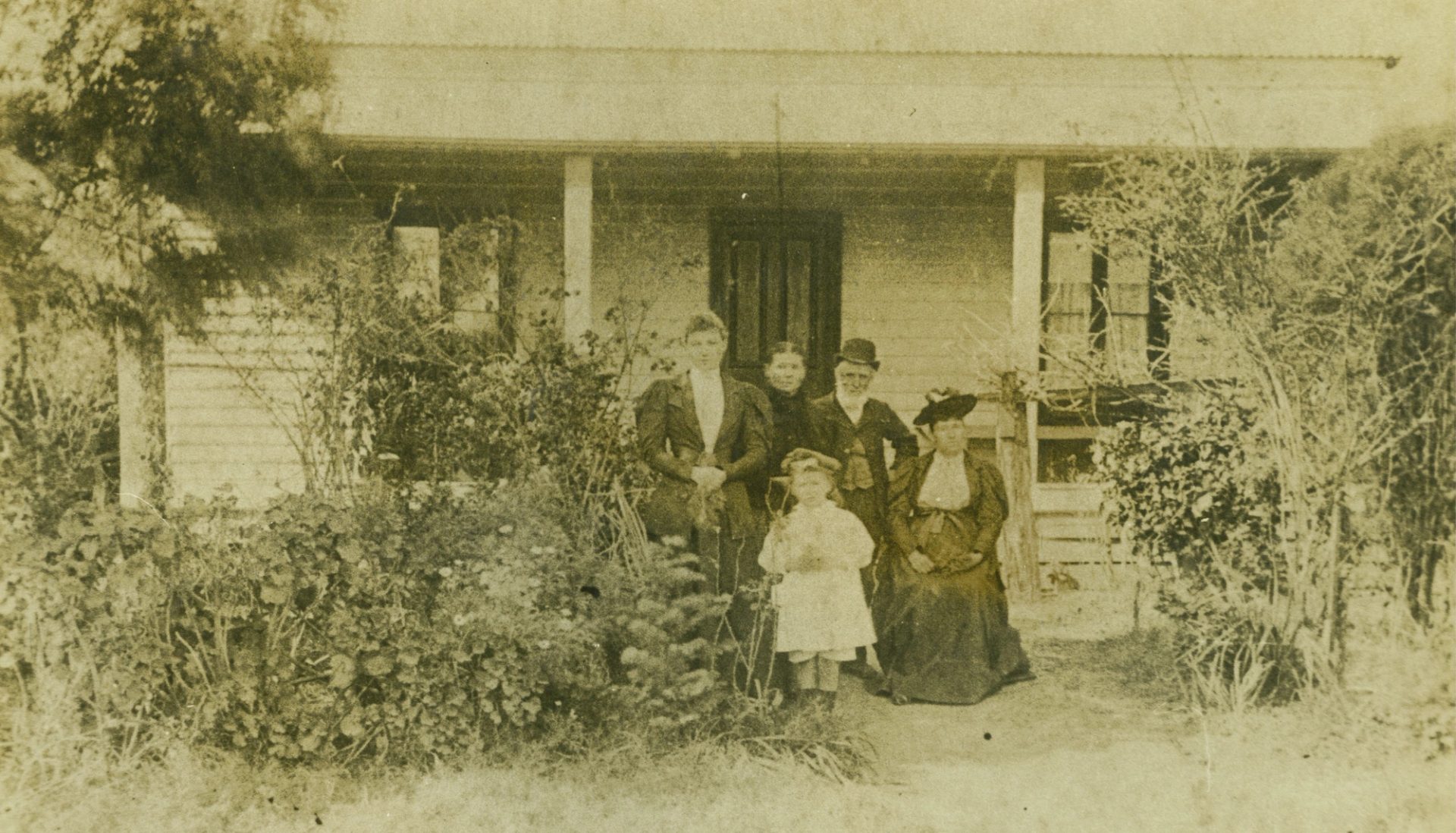
For the next four or five years, Evans worked for the mariner and mercantile agent Robert Towns in his Millers Point warehouse, making barrels for Towns’ maritime empire, which transported commodities including Pacific whale oil, bêche-de-mer and New Hebridean sandalwood, and indentured labourers from China and India. Towns’ attitude towards whaling was resolutely mercenary; his motto was ‘to Hades and back if there was a profit in it’.
On board whaling vessels, it was Evans’ duty to shape the staves of casks and barrels used to transport and store whale oil and reassemble barrels he had made on shore. Little is known about his precise movements, but he joined several voyages between 1855 and 1865, including a long voyage to San Cristobal on the barque Jane in 1851. Somewhere off the coast of Australia and the Solomons, on a 221-ton boat that carried up to 1200 barrels of sperm oil, Evans made a series of simple but beguiling scrimshaw pieces from whale teeth, each featuring a singular figure: there’s a lush palm tree with fine-lined fronds and stems of nuts that seems to float like a mirage over what could be ground or restless water; a woman with braided hair in a dark bodice and full-bodied skirt; a gentleman with sideburns in a courtly stance; a blindfolded horseman wearing a cape, who might be Alexander the Great; and the Greek goddess Artemis, daughter of Leto and Zeus, protector of the hunt and of wild animals, who stands in a half-curtsy, proffering an arrow in one hand and demurely holding her bow behind her back. A few of these pieces remain in the family’s possession, including a joyful pair of teeth featuring a dancing Pierrette on one, and a Harlequin in an argyle costume with a ruffled collar on the other.
In his carvings, Evans lavishes close attention on sartorial details: the woman wears a bracelet, and the man a waistcoat, bow tie and watch chain; Artemis is adorned with a delicate crescent moon coronet on her forehead. The fabric of their clothes billows and drapes; fine lines mark out their folds and shadows. Evans’ figures are gestural, mid-movement. The gentleman extends his right hand towards the ground, almost as if he is giving way to someone. The woman holds her arms up in a graceful stance, as though she’s admiring something in the distance. Evans’ figures look to the side, not towards the viewer; they are each preoccupied by something unseen, just out of the frame.
*
The voyage Evans took to San Cristobal on the whaling barque Jane was an unhappy one, culminating in the disappearance of five men, and the prosecution of the ship’s captain for deliberately abandoning them. The facts of this incident were sharply contested in court, with eyewitnesses disagreeing on whether the men had deserted the Jane or been stranded to die at the hands of hostile locals.
What’s known is this: the Jane departed from Sydney in April of 1851 to the South Sea fishery with a crew of 30 men, including Evans as its cooper. By 16 October, the Jane had reached San Cristobal, where it stopped for wood and water. A week later, the Jane had the supplies it needed, and Captain Brazier gave the barque’s crew 24 hours of shore leave so that the men could wash their clothes in a local waterhole. Most of the crew had returned to the boat for dinner at 1.30pm, or a little later in the afternoon. By dusk, the captain sent a boat to shore for the remaining men, but only three returned. Whether by design or by accident, five of the Jane’s crew – John King, George Miller, Samuel Setter, Alexander Smith and Stephen Watts – were left overnight on the island.
The next day there was still no sign of the lost men and Captain Brazier ordered the Jane to lift its anchor and stand at sea. When challenged about why he wasn’t making a greater effort to find the men and asked how he could leave them ‘to the mercy of the islanders’, Brazier took a boat to shore with his second officer, navigator and four local boys. The boat was gone for two and a half hours. No witnesses could say whether it had actually landed or not. When Captain Brazier returned, George Russell – who’d been manning the ship’s wheel – overheard him say: ‘They will all be dead men in a month, and a good job too, the bastards.’ According to Russell’s testimony, the captain returned accompanied by ‘a strange islander whom the crew had not seen before’.
In Brazier’s trial, Russell testified that Captain Brazier ordered the Jane should set sail on a course for the south of the island, where the boat idled for three more days. He made no effort to find the missing men – neither lowering a boat nor dropping anchor for the entire three days – and swiftly replaced them with seven locals who joined the boat from their canoes. After this incident, Russell and two other crew members mutinied. They refused to continue whaling and were put into irons. The Jane didn’t touch land again until December, when it reached Port Jackson, at which point Captain Brazier had the three men thrown into Darlinghurst Gaol and committed to trial for conspiring to break up the voyage.
Russell’s fellow informants, James Hudson and Thomas Morgan, mostly agreed with Russell’s testimony, but Russell’s account was later called into question because he failed to disclose that he’d had a serious altercation with Captain Brazier a few months earlier, in which he had threatened legal proceedings against him, and was subsequently severely beaten and punished by being forced to make sennit – a plaited cord – for a fortnight on the ship’s deck.
The Jane’s chief officer Joseph Woods offered a differing account of the voyage. His memory was hazy, he claimed. He remembered the difficulty in coaxing the men back on board, and the captain saying, after the attempted rescue the following morning: ‘Those men will die of fever and ague, they are very foolish people so to leave the ship.’ He also claimed that a change of weather and a heavy current meant that it was too dangerous to attempt rescue again.
The second officer testified that the weather had been ‘dirty’ during the men’s shore leave, and that George Miller initially returned to the Jane at dinner time, before returning to shore by insisting that his clothes were still drying on the island, and then refusing to return to the ship. The second officer also testified that by the time the captain reached the island that evening, the men had vanished, and the coastal islanders reported they had gone to the mountains, where there were hostile tribes. He claimed the captain had offered the coastal islanders two axes for each of the men – objects which were highly valued – and extracted a promise from the chief to look for them, but who subsequently reported the men were beyond recovery, even when further rewards were offered.
The second officer testified that it was Russell and his fellow informants’ refusal to continue whaling that forced the Jane’s return to Sydney. The ship-keeper and navigator Charles Wentworth testified that the men had deliberately deserted and were prepared ‘to take up their abode in the island’. Alfred Evans corroborated this account, and the magistrate dismissed the charges. The five men left on San Cristobal were never found.
Somewhere on this calamitous voyage – either before or after the disappearance of the five men, and the subsequent mutiny of three more – Evans was etching his microscopically fine, controlled lines into sperm whales’ teeth.
*
The only other small glimpse into what life might have been like for Evans on the Jane comes from the best-known whaling scene in Tasmanian colonial art: a brutal skirmish called Offshore whaling with the Aladdin and Jane by William Duke. While the Jane operated mostly out of Sydney and Auckland, it also occasionally worked out of Hobart. In Duke’s canvas, the Jane floats serenely in the background, its blousy sails a pale wash over the Derwent. In the seething waves of the middle-ground, a flotilla of rowboats and harpooners rise and fall in the chop as they attack two sperm whales, one of whom is only represented by its disappearing tail. In the painting’s foreground, a whale’s mouth – open in agony, it seems, or exertion – reveals the sharp white rows of teeth. At the time Duke painted his canvas, whales were so plentiful in the Derwent that those who lived close to the river complained that the din of whale song at night kept them from sleeping.
*
Because sperm whales are unfathomably large, it’s natural to contemplate their size on a more human scale. The largest of the Odontoceti order (the toothed whales), sperm whales reach up to 24 metres in length, weigh up to 50 metric tons and have the largest brain of any creature on Earth. Put another way, they are roughly as long as a standard tennis court, or just shy of half an Olympic swimming pool. Primarily hunted for oil, spermaceti and blubber – material for candles, lighting oil, soap, varnish, paint and lubricant – sperm whales live throughout the warmer waters of the world’s deep oceans between 40 degrees south and 40 degrees north, fuelled by giant squid and fish. Travelling the world in pods of between 15 to 20 animals, they communicate by sonar clicks – known as coda – at the volume of a rifle shot, loud enough that nearby divers can feel the reverberation in their bodies. Over the centuries some sperm whales have learned to avoid whaling vessels and warn nearby pods to stay away.
Their monolithic heads are square, with a shallow trapdoor of a lower jaw counterbalancing their bulbous spermaceti organ. Around 24 pairs of teeth on their lower jaws – ranging between 13 and 20 centimetres in length – nestle into deep sockets on their toothless upper jaws. The largest teeth of a sperm whale on record – collected from a specimen caught between Argentina and Uruguay – weigh more than 1.8 kilograms apiece. Drawing on scenes he witnessed firsthand on Atlantic and Pacific whaling boats, Melville describes the stubborn extraction of a sperm whale’s tooth as being akin to an ox in the Michigan woods dragging out the stump of an old oak tree.
While sperm whales’ teeth were initially incidental to the hunt, they became prized by the whalers, who would trade tobacco or do additional chores to extract a tooth from the second mate for scrimshaw. Tooth in hand, the whaleman would work quickly, as the material could harden when exposed to air. Using a file, he would abrade the ridges of its surface, then polish it with dried shark skin or pumice, then cut lines with a sail needle, jack knife or other sharp point. Sometimes the strokes would be relatively artless and coarse; other times they would be fine as a filament, solid or stippled. Occasionally whalers would trace images from newspapers or other sources onto the tooth’s surface by pricking through the paper into the enamel: a ghostly transference. Rubbing the grooves with soot, oil, Indian ink or lampblack helped the image stand out in relief.
The process was painstaking and slow – but the men had nothing but time.
*
Like most artforms intended to quell idle hands, scrimshaw runs the gamut from the amateurish to intricately artful. Expert scrimshanders would move beyond embellishing the ivory, panbone and baleen and transform them entirely into useful and decorative objects, such as pincushions, pastry cutters and pie crimpers with full round sculptural handles in the shape of snakes or birds, toys, musical instruments, stilettos, needle cases, napkin rings, eggcups, chess sets, whip handles, crochet hooks, thimbles, workboxes and baskets, dice and shakers, spoons and inlays for colonial furniture. The most architecturally challenging form to construct was the wool winder or swift: an intricate umbrella-like apparatus with multiple fine arms of whalebone that could accordion in and out and be clamped onto a tabletop in order to wind yarn into a ball. Wool winders were almost exclusively the province of captains, who often alone had attained the requisite skill to construct them. Some scrimshaw objects, like stay busks made of baleen, were intended to be worn close to the skin, as stiffeners in women’s bodices. Many stay busks were engraved with romantic messages, such as this poem dedicated to a lover:
Most scrimshaw objects were domestic and feminine in nature, due to their status as gifts or keepsakes. But scrimshanders also fashioned cufflinks, cane knobs, whip handles and walking sticks, as well as marine items, tools and fittings used on whaling boats, including navigation dividers, blocks and pulleys, spigots, shackles, deadeyes and net needles. Ivory and whalebone structured the whalers’ lives like an invisible element, commonplace as brick or wood.
Throughout Melville’s Moby-Dick, the fanatical Captain Ahab – hellbent on killing the white whale which cost him his leg – stands on an unusual piece of scrimshaw. Ahab’s ivory prosthetic leg, fashioned from a sperm whale’s jawbone and carved with a flat surface so he can do wayfinding calculations on its surface, is his ballast and crutch. Ahab is incapable of taking a single step without the whale’s assistance, yet the poetry of his situation escapes him. Even Ahab’s boat, the Pequod, is only seaworthy because whalebone has been used to address structural damage sustained in battles with whales. Ahab’s all-consuming hunt to annihilate Moby Dick brings about his own destruction, which takes place on a boat that is freighted with ivory decorations, from carvings on the hull through to a set of macabre teeth studding its deck, giving the boat the appearance of a whale’s jaw.
When the white whale finally surfaces in Melville’s novel, its mouth greets Ahab first. From the ocean’s depths, Ahab spots ‘two long crooked rows of white, glistening teeth, floating up from the undiscoverable bottom’. Beholding this sight, the captain’s first thought is that the whale’s maw looks like an open marble tomb.
*
The history of scrimshaw is shot through with death and mourning, because seen in one light, it is a form of memento mori, or even of ceremonial or religious significance. On his desk in the Oval Office, John F Kennedy – a scrimshaw enthusiast and avid collector – kept a single piece of scrimshaw: a sperm whale’s tooth engraved with a boat and scrolling hairline waves. In this setting, imbued with the gravitas of the presidency, scrimshaw evokes an isolate and rugged masculinity, and recalls mythic American narratives of man’s battles with the sea like Moby-Dick. When JFK was assassinated, a piece of scrimshaw accompanied him in his coffin, symbolising the limits of human power, the vulnerability of mortality and a monumental national grief.
When Australian Prime Minister Harold Holt went missing in the surf, the nation of Fiji gifted Australia a polished whale’s tooth on a rope cord as an expression of mutual grief. A famous source of powerful mana and chiefly power in Fijian culture, whales’ teeth are known as ‘tabua’. Given as wedding gifts, and used to consecrate political pacts or foment wars, they are not only a source of wealth and prestige, but also imbued with divinity. The most precious examples of tabua are smoked red. Across the Pacific, from Melanesia to Hawaii, Tonga and the Marquesas, Pacific Islanders trade raw sperm whale teeth and use them for cultural purposes and personal adornment. They are valued not only for their rarity, but their religious and social power. First Nations people from Australia and around the world – among them Iñupiat, Kāi Tahu and Ngarrindjeri peoples – have been described as ‘whale people’, recognising the ancestral and spiritual dimensions to their relationship with whales. Certain Coast Salish and Māori peoples believed that the ritual respect they accorded to whales invested them with the ability to call whales to shore.
It’s possible that on his voyages Evans encountered some of these beliefs among fellow whalemen. By the 1850s, when Evans was working on whaling vessels, Sydney’s fleets often departed with a skeleton crew, due to the exodus of men to the goldfields. Sperm whales were becoming scarcer than during the boom years between 1836 and 1849, and Australian voyages occasionally ventured all the way to the Arctic and the Bering Strait, hunting Arctic right whales to supplement their catch. Crews were recruited en route, and boats were manned in part by Māori and Pacific Islanders, who may or may not have participated in the production of scrimshaw. Tangled into the history of scrimshaw are complexities of migration, movement and trade, and a range of competing views about the power and sanctity of whales.
*
During stints on shore, either between whaling voyages or possibly later in his life when he was working as a farmer and living along Gladstone’s Macleay River, Evans returned to making scrimshaw, fabricating much more complex objects from whalebone and ivory than the carvings he completed at sea. These elaborate objects included a salt and pepper cruet set, dice, a sewing needle case, an awl, as well as an intricate pocket watch stand and – in a subtle echo of Ahab’s ivory leg – a carved bone walking stick with a knotted handle inlaid with triangles, diamonds and circles of black and red tortoiseshell. If the pieces were completed later in life, it’s hard not to speculate whether these works were inflected with some nostalgia for a world Evans had left behind and was swiftly fading. Evans died in 1895, on the threshold of a new century which would usher in new sources of fuel that would make sperm whale oil and spermaceti obsolete, stark realisations about the ecological consequences of overhunting and overfishing, new ways of thinking about animal agency and intelligence, and new understandings of the interdependence between species.
In one light, scrimshaw is an act of mastery over the animal world, commodifying the whale’s remains as trophies or trinkets. Some might even see it as a defacement, or act of cruelty – the relic of a vanished world, as worthy of condemnation as elephant ivory. In another light, the scrimshander’s artistry is an act of homage or even subservience – a recognition of the whale’s miraculous vastness, and the impossibility of holding its totality in the human grasp.
Each spring, looking over Frenchman’s Beach to the Coral Sea, I watch humpbacks migrate off North Stradbroke Island. They appear first as drifts of vapour – an armistice of mist on the horizon. Surfacing, they detonate, then ocean absorbs their weight. They move in pods, or alone. At dusk, they hammer their flukes on black water wrinkling with whitecaps. A mother and her calf stray close to the cliffs. Watching them, I am moved to stillness. A skerrick of whale song is ferried on the wind, cool and ethereal.
Humpbacks belong to the order Mysticeti – toothless whales – because in place of teeth, they have a sieve of dark baleen through which they filter krill. By the time humpback whaling was banned in 1963, Australia’s east coast population was estimated to be as low as 100 individuals. Left alone, the whales have steadily rebounded, and close to 40,000 humpbacks migrate past here annually – a larger population than is estimated to have existed prior to commercial whaling. A local couple keep an annual tally of the whales they see each dusk and dawn from their deck on a chalkboard in a local cafe. This season, the chalkboard reads: 3964.
The calves I see today have a life expectancy of 70 years. They will outlive me, and I take comfort in knowing this. They seem to be idle on the horizon, barely moving, the distance between us impossible to breach. They are busying themselves with the future, their bodies alive with hunger, moving in their own long time.
Author
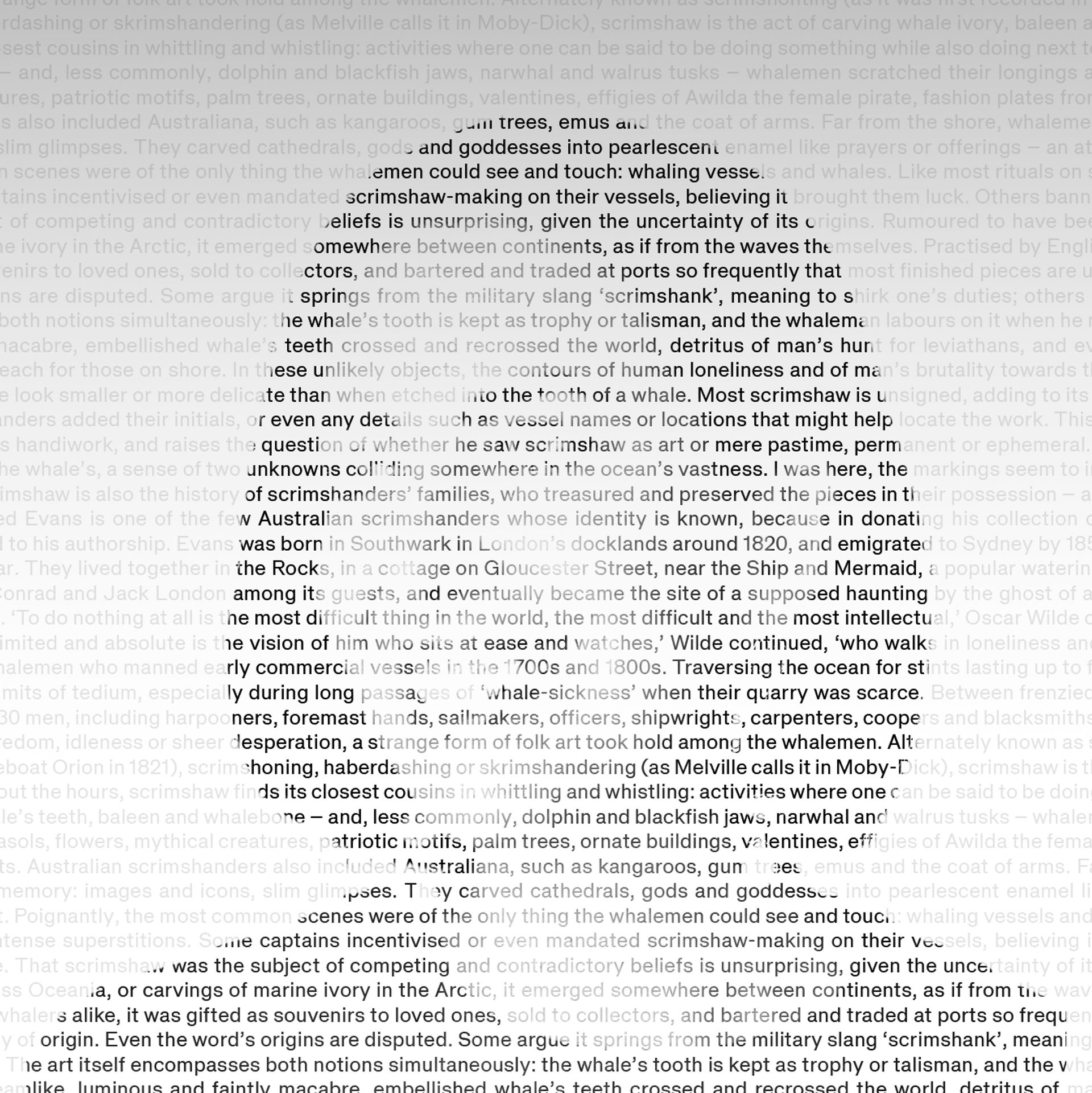
Sarah Holland-Batt is an award-winning poet, editor and critic, and the author of three books of poems – most recently The Jaguar – and a book of essays, Fishing for Lightning, a collection of her columns on contemporary Australian poetry written for The Australian newspaper. Her books have received many of Australia’s major honours for poetry, including the Prime Minister’s Literary Award, the Stella Prize and The Australian’s Book of the Year. Her Selected Poems was released by Bloodaxe Books in the United Kingdom in late 2024. She presently is Professor of Poetry at the Queensland University of Technology.
Writing Objects
Writing Objects is a new series of writing engaging with the Powerhouse Collection, opening it up to new audiences and communities. Writers from Australia and around the world share their response to objects.
Bringing scientific, historic and personal perspectives, these stories highlight the museum’s newly digitised collection of close to 500,000 objects and offer new ways to navigate the applied arts and sciences.
The Powerhouse digitisation project is one of the largest being undertaken internationally and will result in new levels of community access to the museum’s extraordinary collections for local, national and international audiences.
